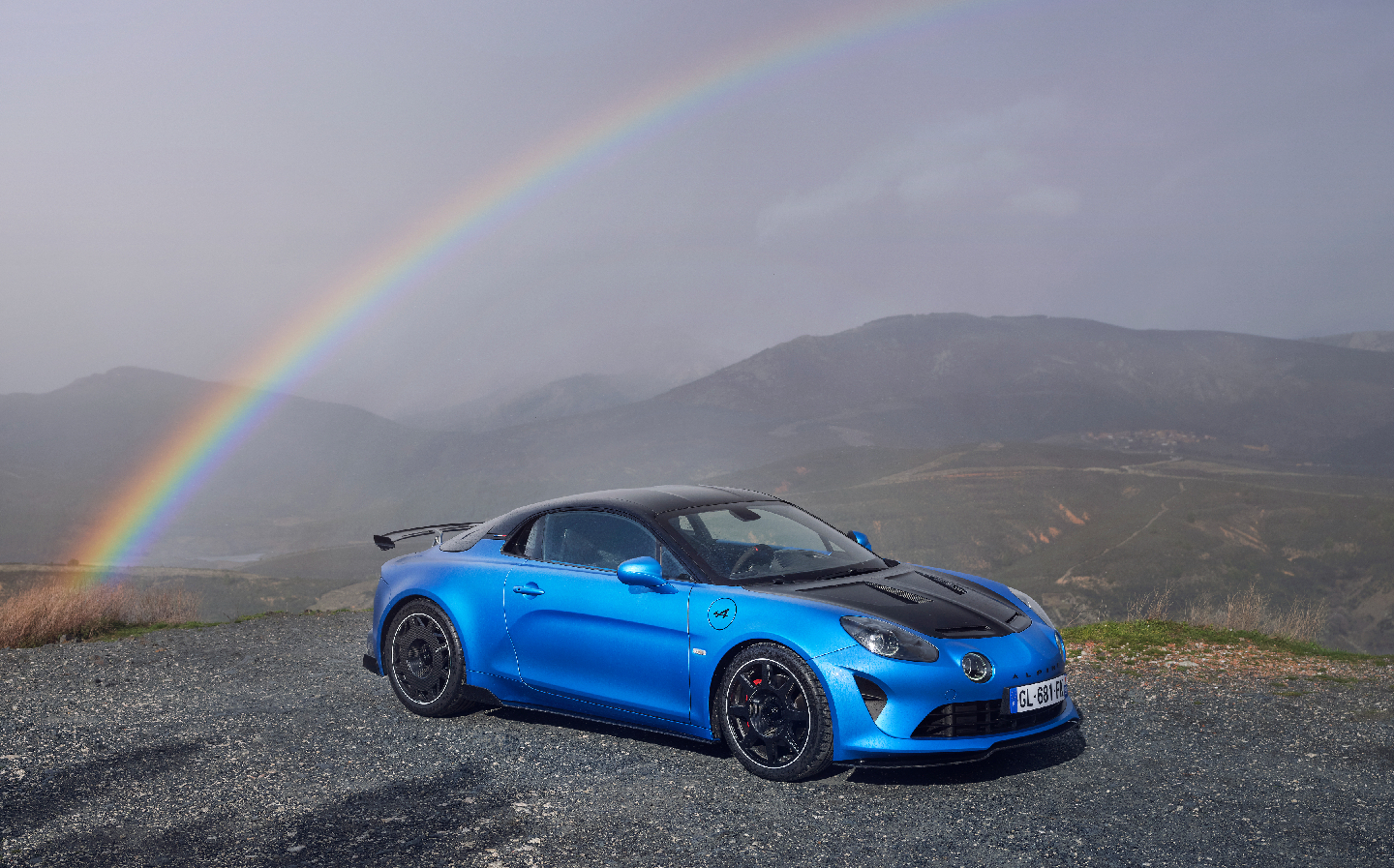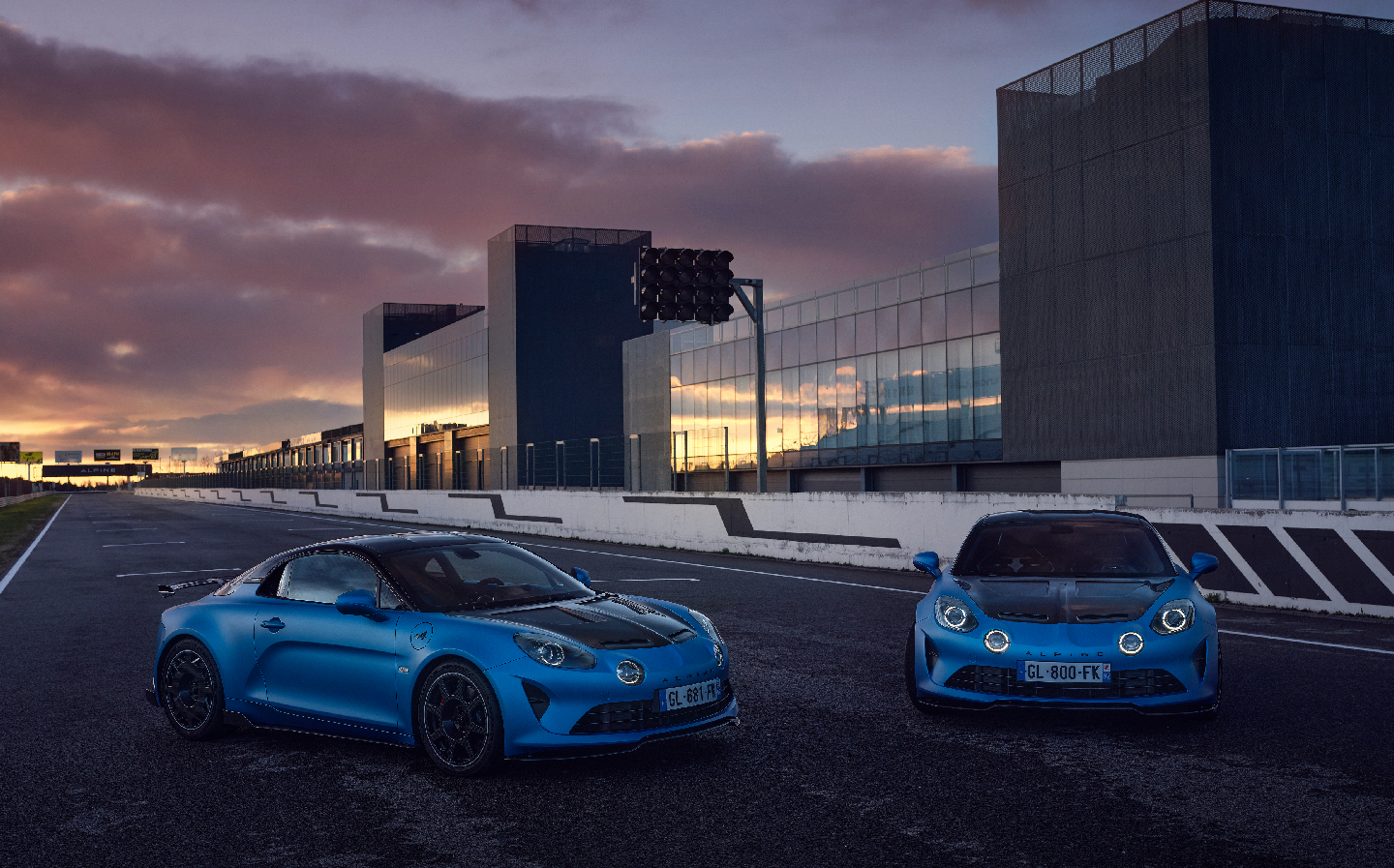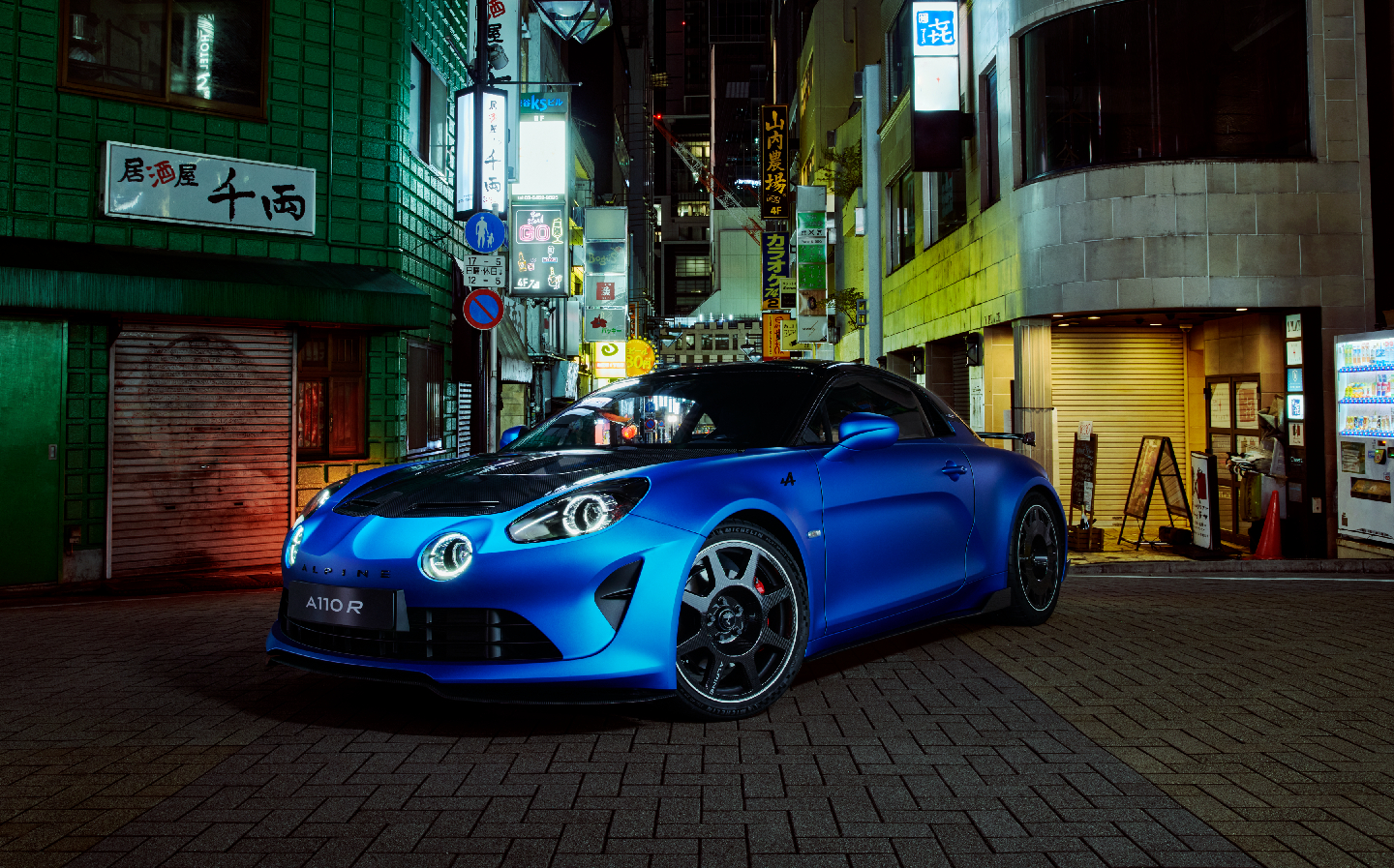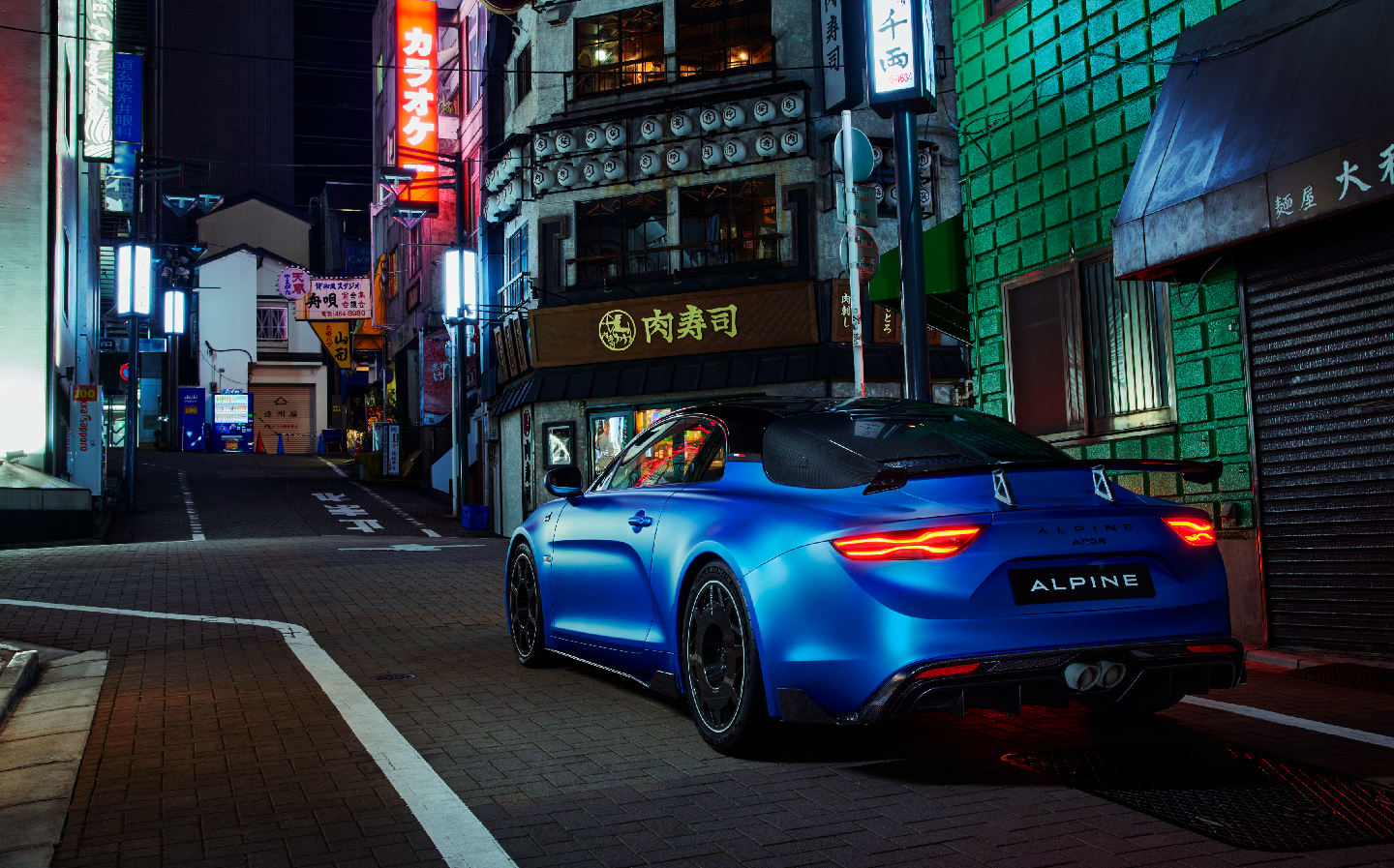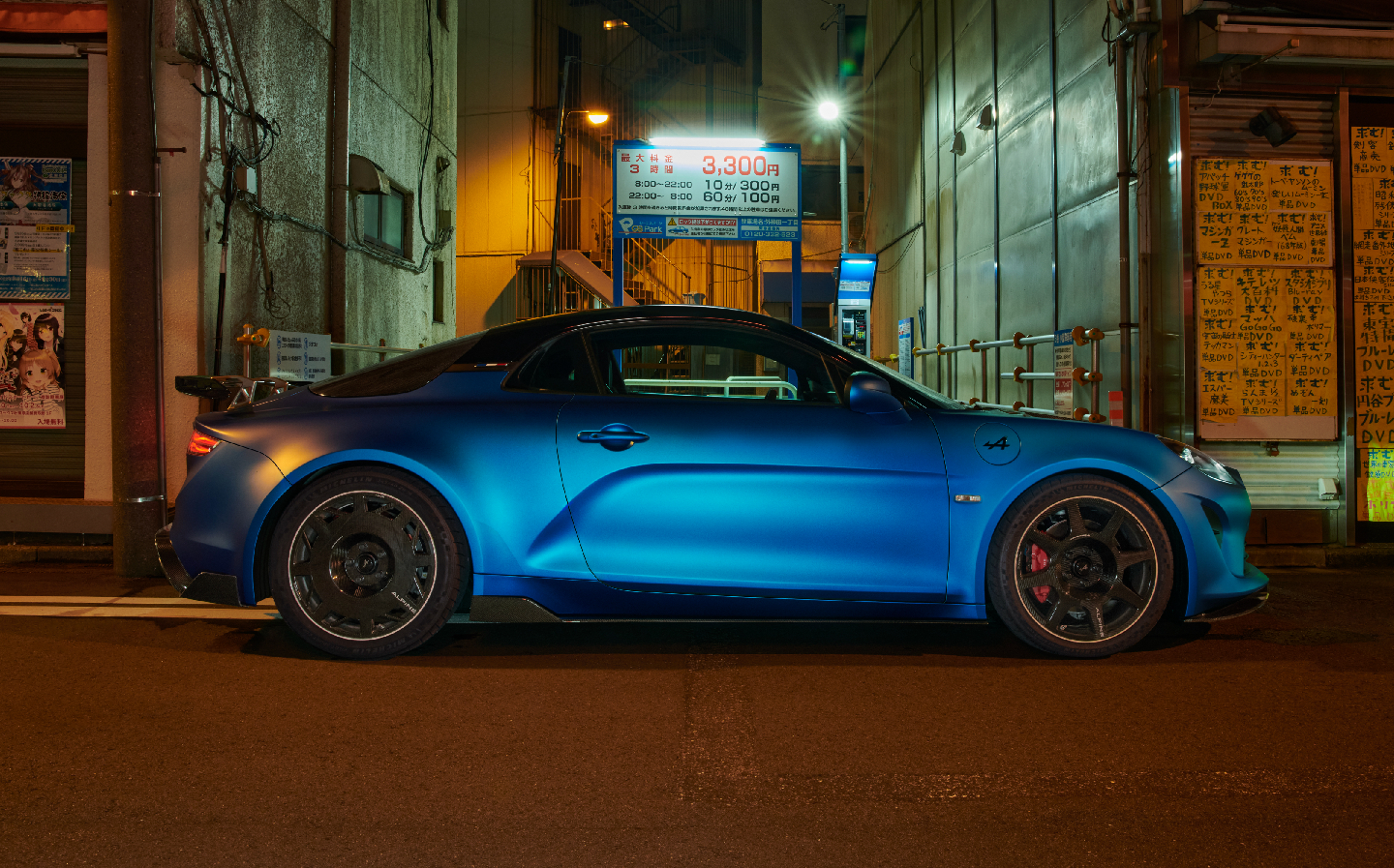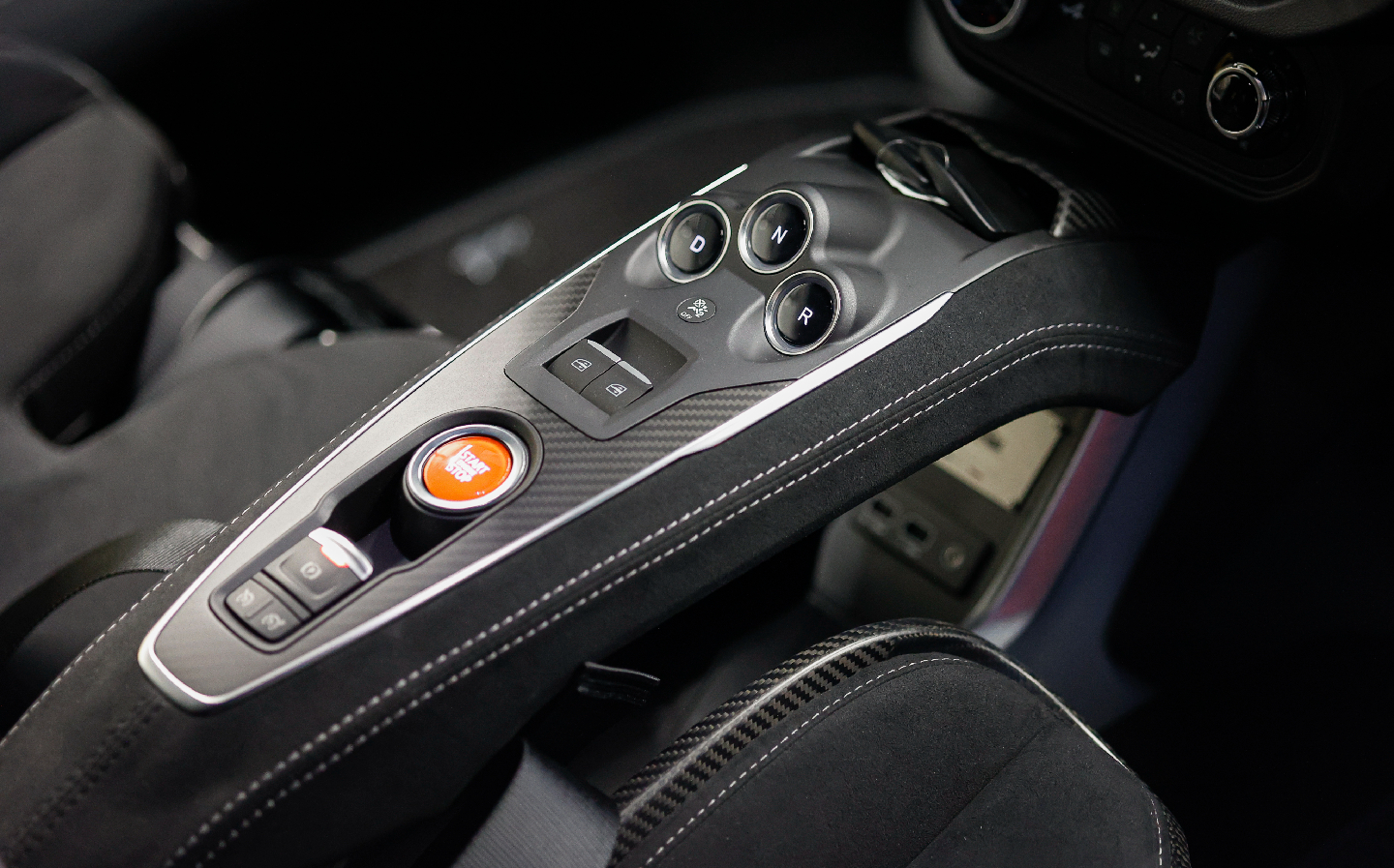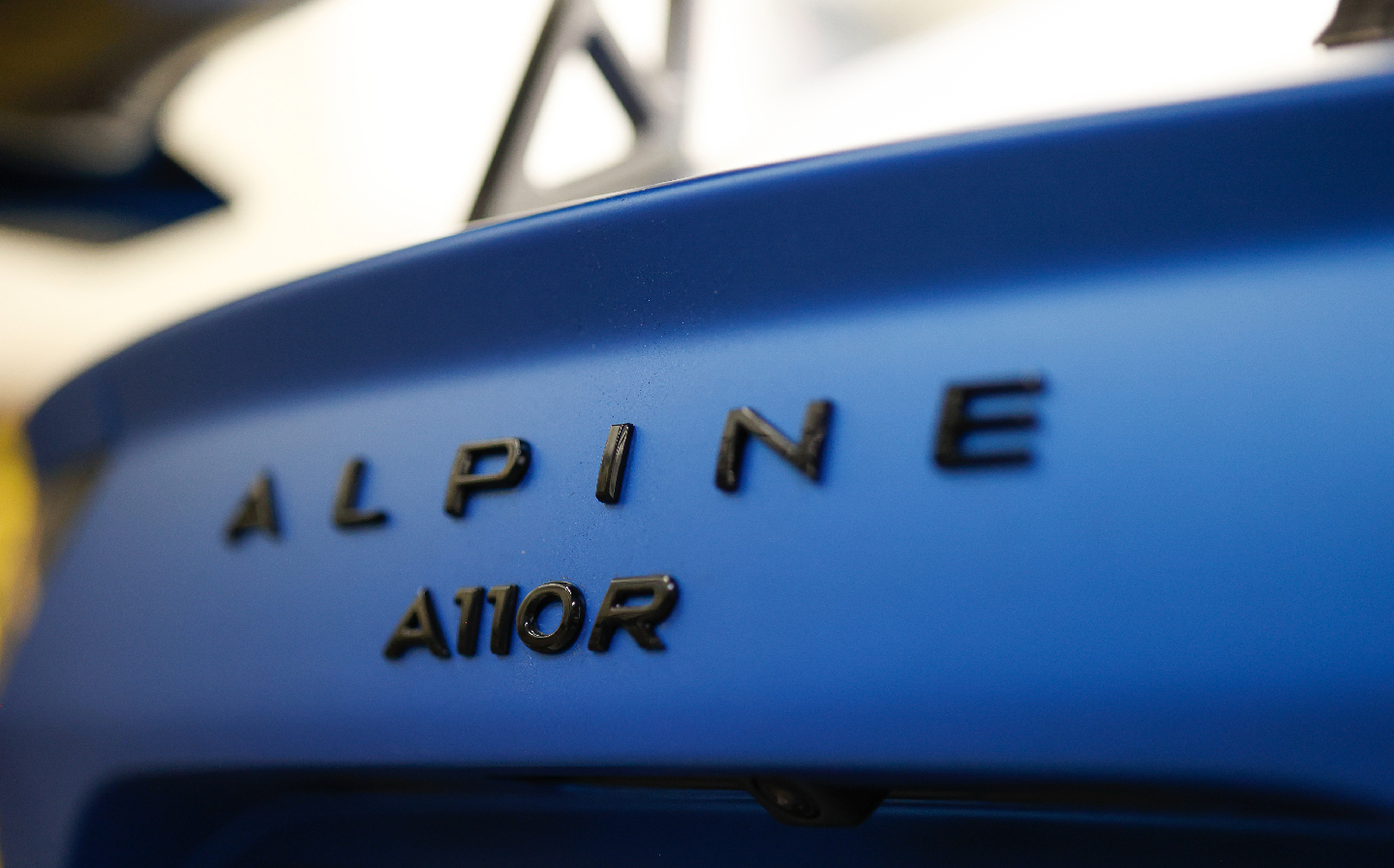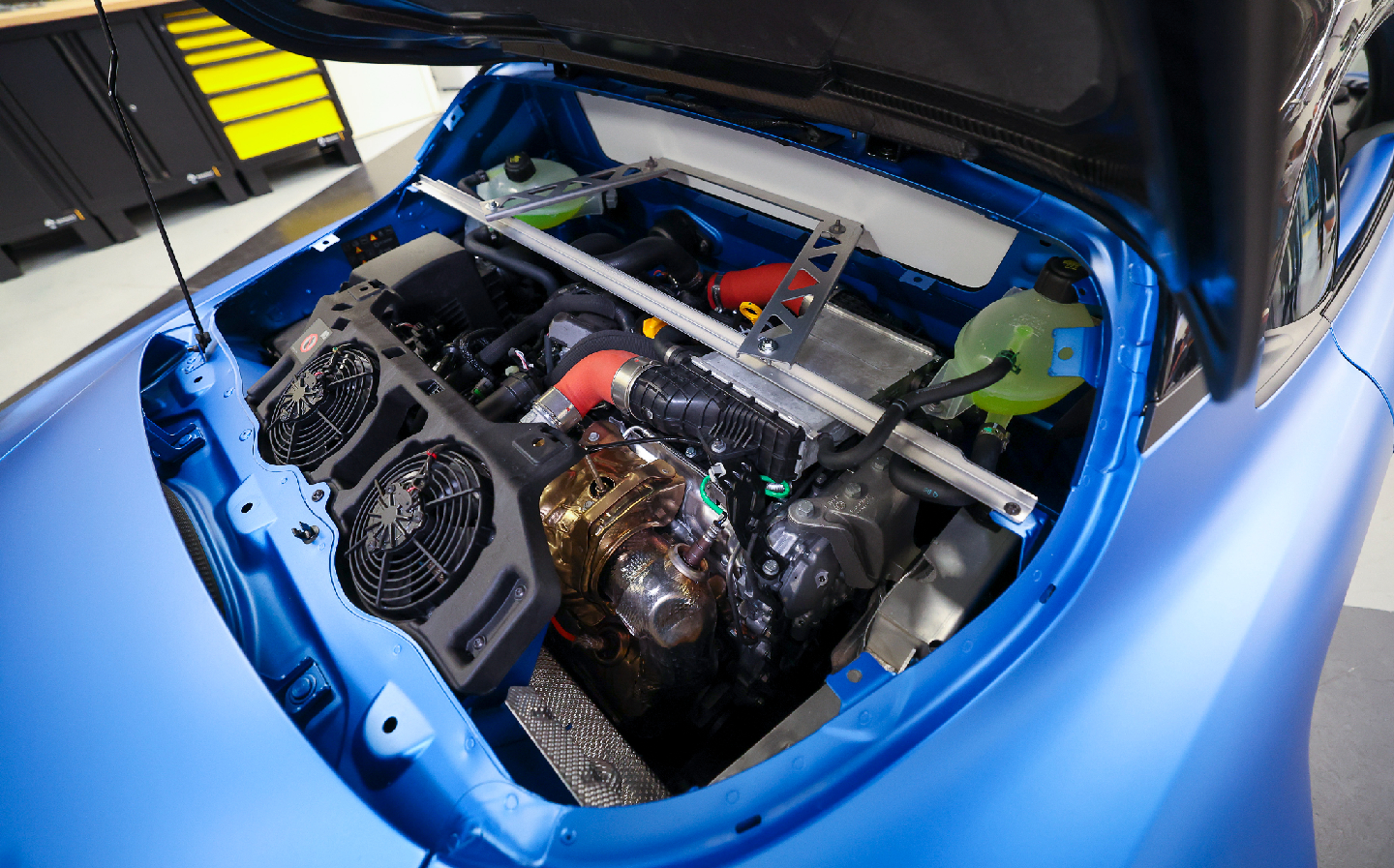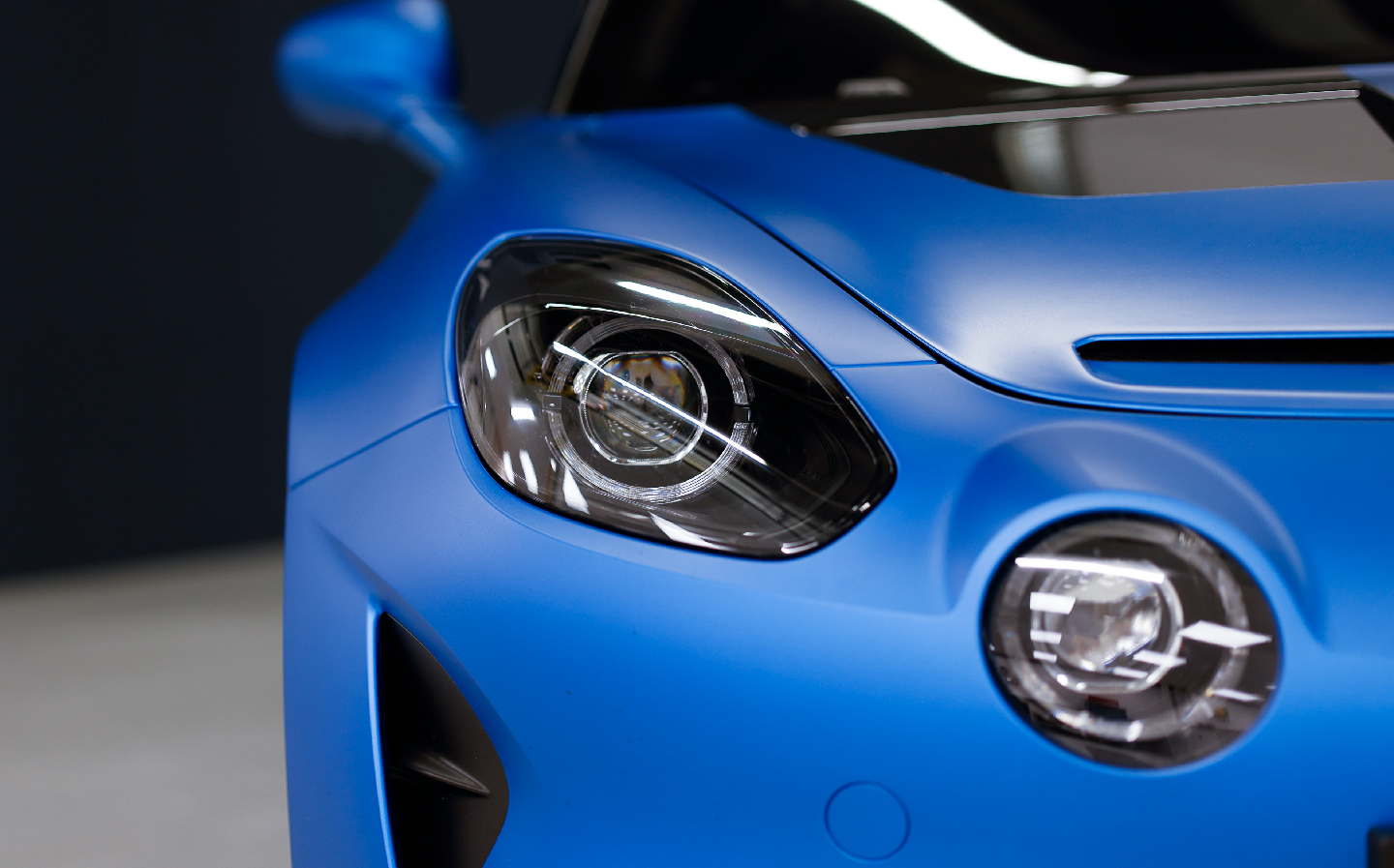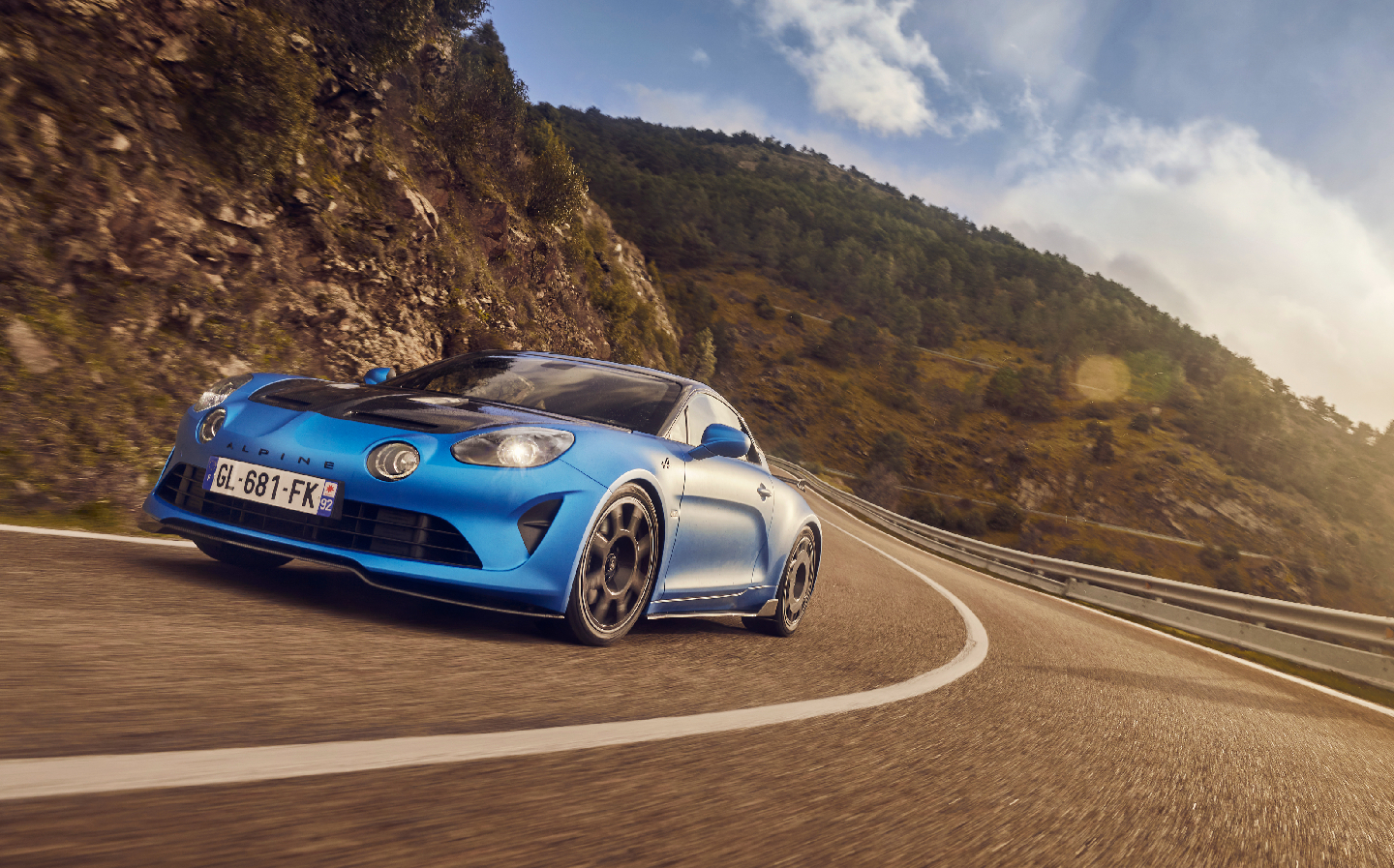Alpine A110 R 2023 review: On road and track with most radical version of the lightweight sportscar
Come and have a go if you think it's R'd enough
French carmaker Alpine unveiled its new A110 R – the “most radical” derivative of the perky sports car yet – at last years’ Japanese Grand Prix. Why? Because Alpine is big in Japan, it turns out – there are now 20 dealers over there – and associating its new road rocket with the Alpine F1 team wouldn’t do any harm at all.
During development Alpine even went as far as to invite its star grand prix driver Fernando Alonso to develop his own special edition of the A110 R, though in an unfortunate development the double world champion went on to announce that he would be jumping the Alpine ship at the end of the 2022 season.
Too far down the development road to turn back, the carmaker stuck to its plan and so the world will be blessed with 32 examples of the Alpine A110 R Fernando Alonso Edition (32 being the number of F1 race wins to his name), despite the Spaniard wearing Aston Martin colours this year.
That may make them all the more desirable (you can bet there won’t be any more Alonso Alpines) but if you wanted to get your hands on an example, you’re out of luck – all have been allocated. And due to the exceptionally limited production run, seeing one on the roads of the UK will be like catching sight of a unicorn, as just two will be coming to our shores.
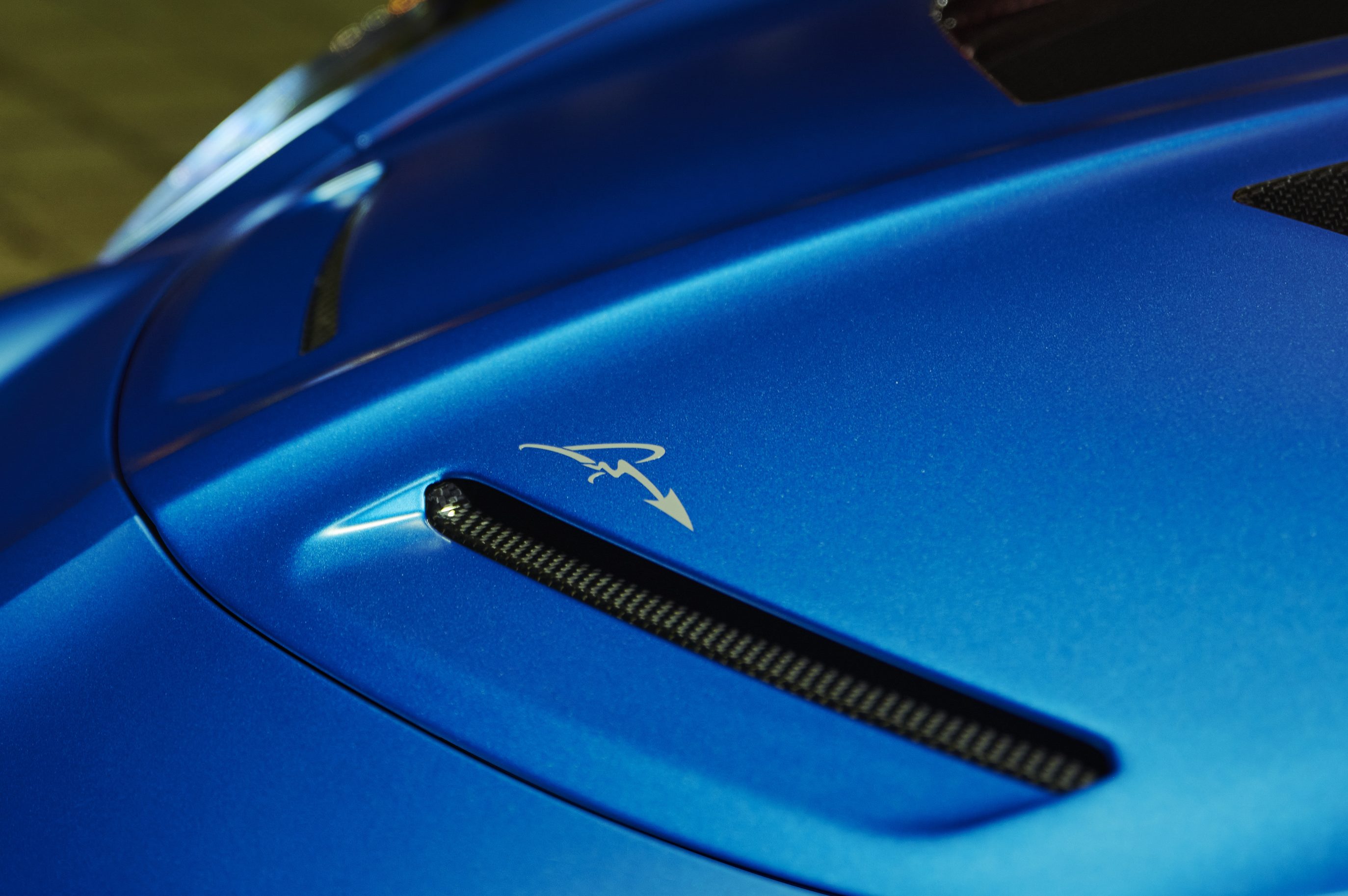
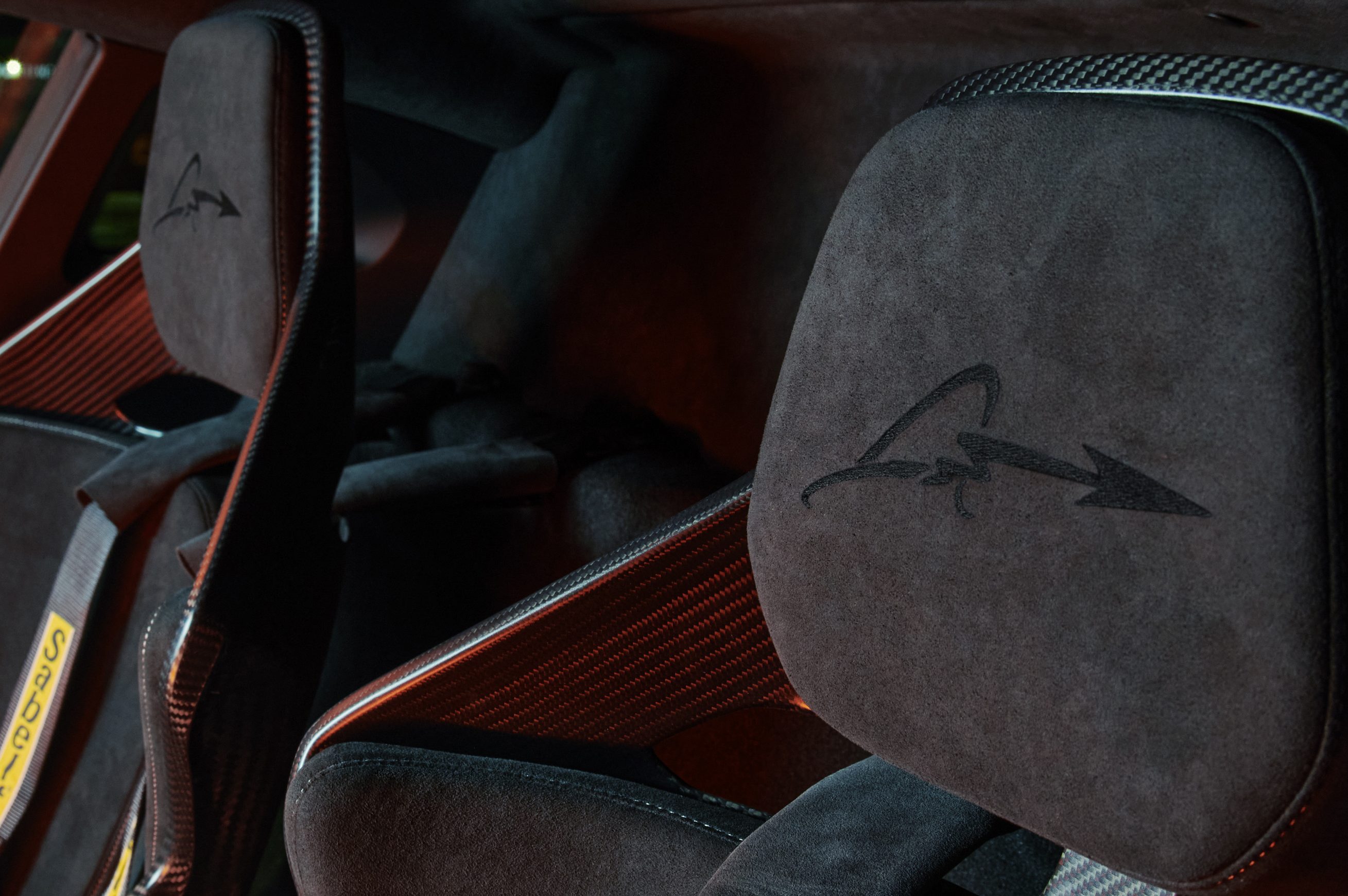
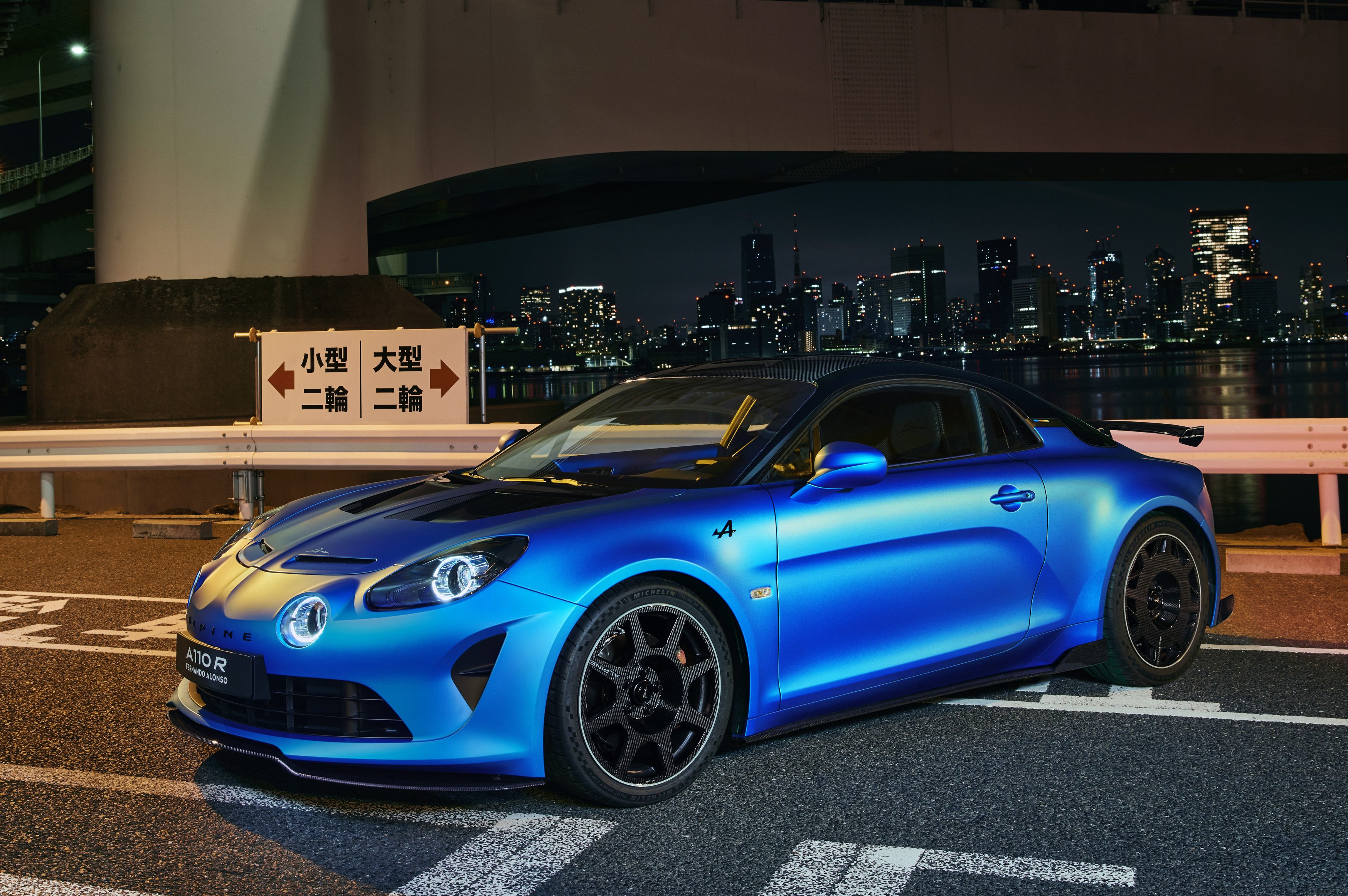
Perhaps there will be an Esteban Ocon or Pierre Gasly edition announced next year; over dinner at the A110 R launch in Madrid, Alpine’s chief designer did let slip that something “fun” in this regard is going on behind the scenes, but refused to elaborate further.
Even the regular A110 R will be a rare machine, mind you. Production volume isn’t limited but building them won’t be speedy, so Alpine is shipping just 32 to the UK this year. Those are all sold but I was told you can place an order today if you want to secure a 2024 delivery.
But would it be worth the wait? Read on for the full review.
Exterior design and weight-saving efforts
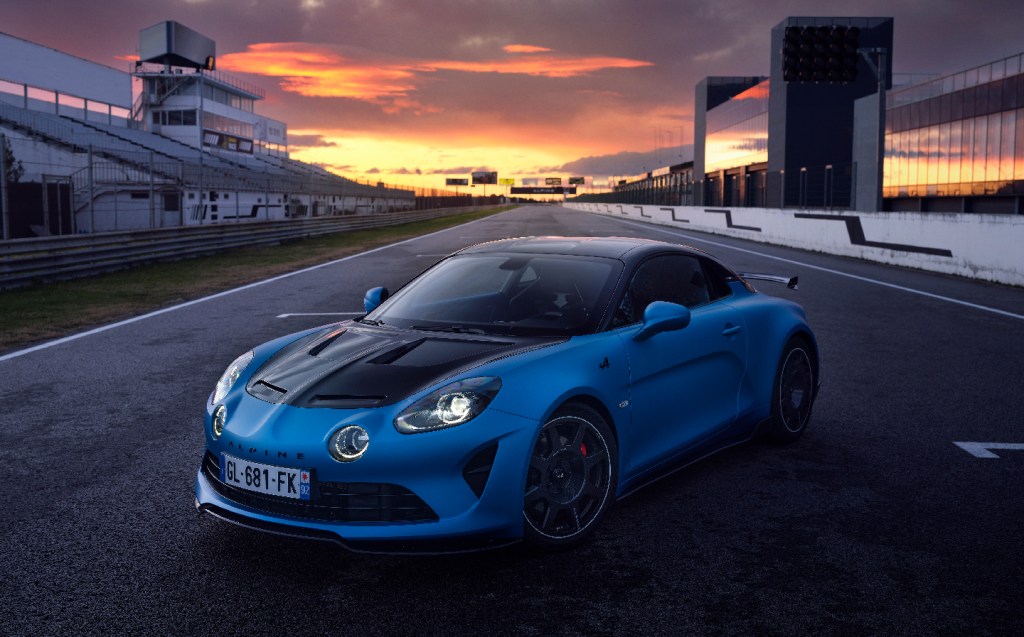
The base Alpine A110 is slippery through the air but with the A110 R, the goal was to find a balance between low drag and improved downforce. The most obvious example of the bodywork changes is the motorsports-derived rear wing, with its swan neck design meaning it hangs from the struts leaving the crucial underside to do its job of producing negative lift unmolested by metalwork.
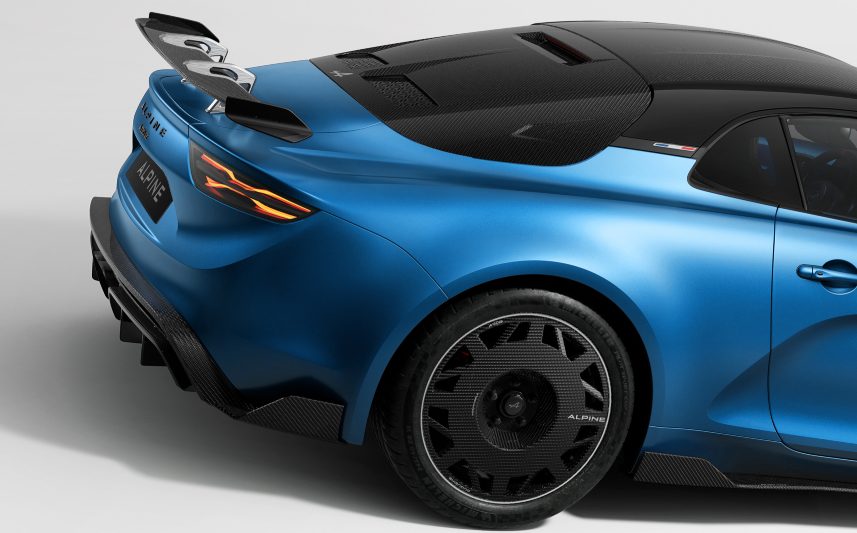
There’s also a new flat undertray and rear diffuser, while the air intakes on the carbon fibre front lip from the A110 S have been modified to reduced wind resistance. Wind tunnel testing enabled Alpine to increase the top speed to 177mph thanks to a 5% drag reduction compared with the A110 S. The aero tweaks mean downforce at the front has been reduced by 33kg at max velocity, though an extra 29kg has been added to the rear, which obviously makes the feel of the cars very different at high speeds.
The use of carbon fibre extends to the diffuser, side skirts, bonnet, rear wing and rear “window”. Even the wheels are fully carbon fibre, saving 12.5kg of unsprung mass alone (watch how these are produced below).
With no rear window, visibility is completed obscured (you must rely on the side mirrors) and so the glass panel behind the seats has been replaced by an aluminium composite panel reducing mass by a further 1kg. The forensic attention to detail has also resulted in shaving 700g by removing the exhaust valve.
All-in, the weight savings are significant: the A110 R tips the scales at 1,082kg — 34kg lighter than the A110 S (the wheels alone save 12.5kg). The only way to make it lighter, one of Alpine’s engineers told me, would be to remove the air conditioning and sound systems, “but then it would be a race car, and not a road car,” he said. My suggestion that perhaps Alpine could offer those things as a no-cost option, as Porsche does, was simply met with a smile.
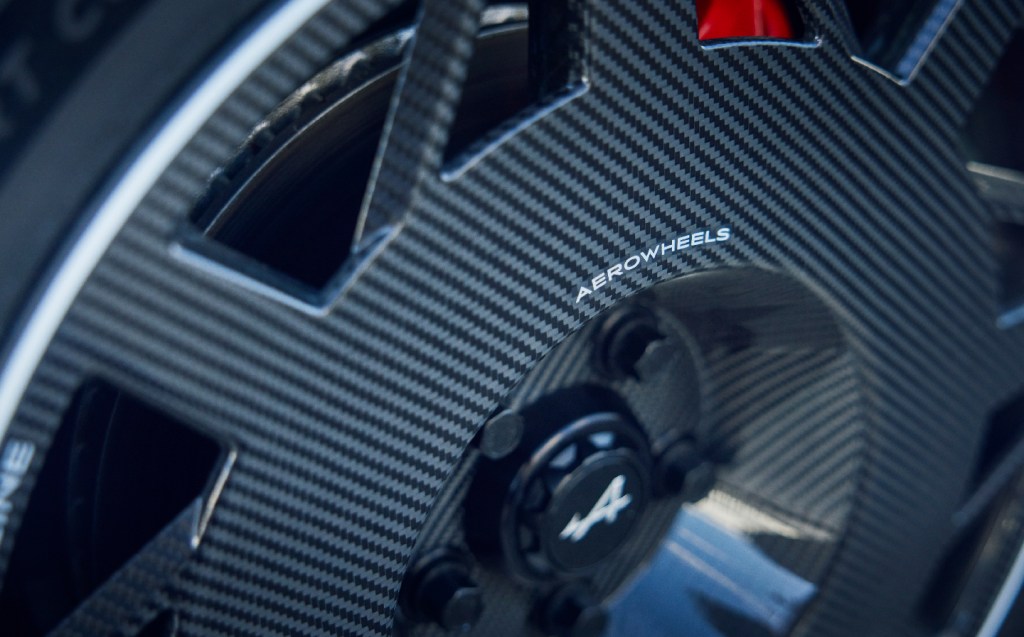
For those getting their hands on the Alpine A110 R Fernando Alonso, there are a few aesthetic changes that mark it out, including the painting of the carbon fibre bonnet and rear cover (these carbon parts are exposed on the regular R) and the use of anodised black for the wing’s support columns.
The wheels also get grey edges while Alonso’s blue, orange and yellow flag appears on the rear quarter windows. Alonso’s signature is also on the car.
Interior and technology
The weight saving continues inside, with each of the single-shell Sabelt seats being 2.5kg lighter than those of the A110 S. Despite being designed for competition and fitted with 6-point race harnesses, they’re not uncomfortable for road use and drivers up to 6ft 5in will not feel cramped behind the wheel with the seat slid all the way back. That the passenger seat is fixed is not too much of a hardship.
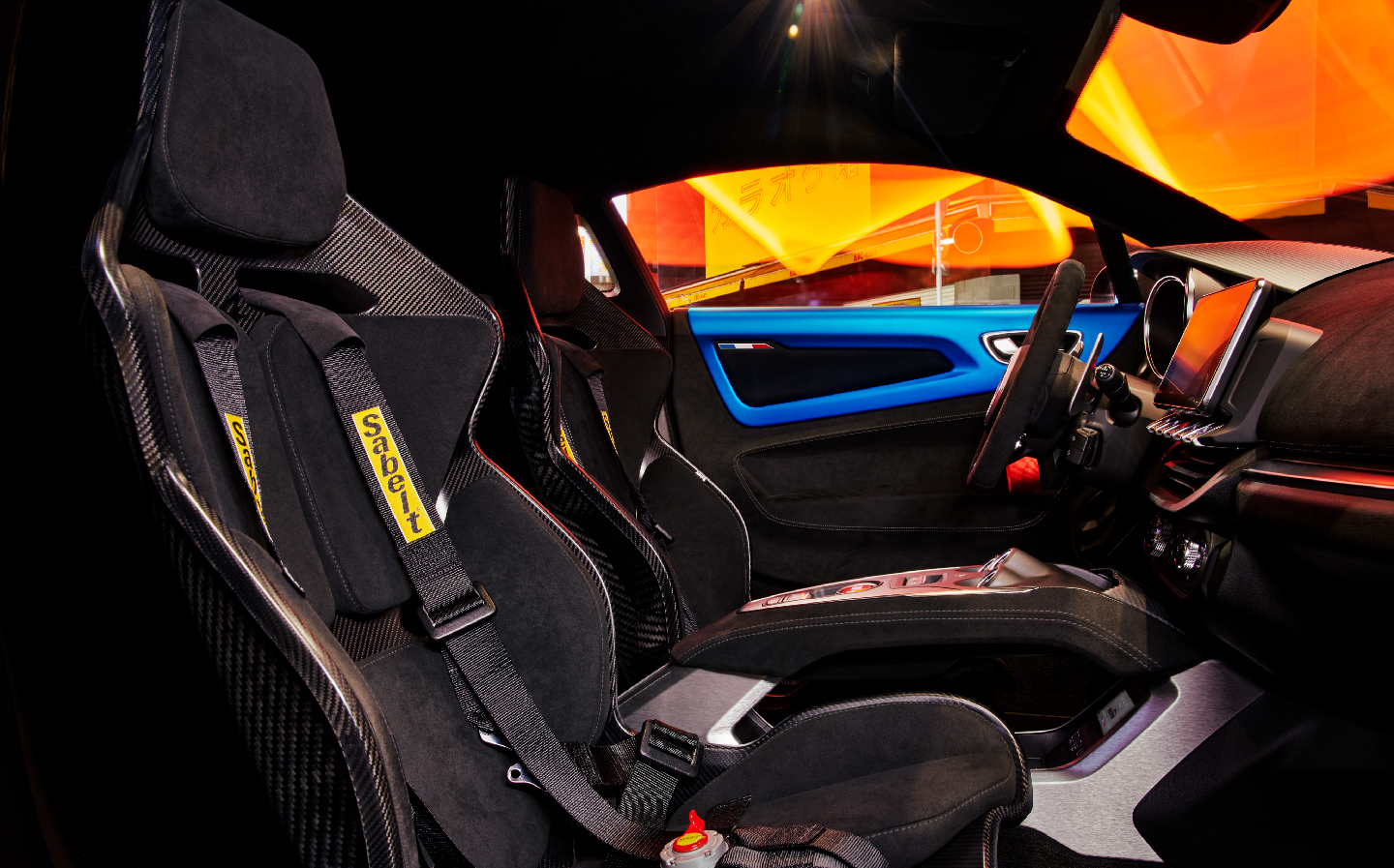
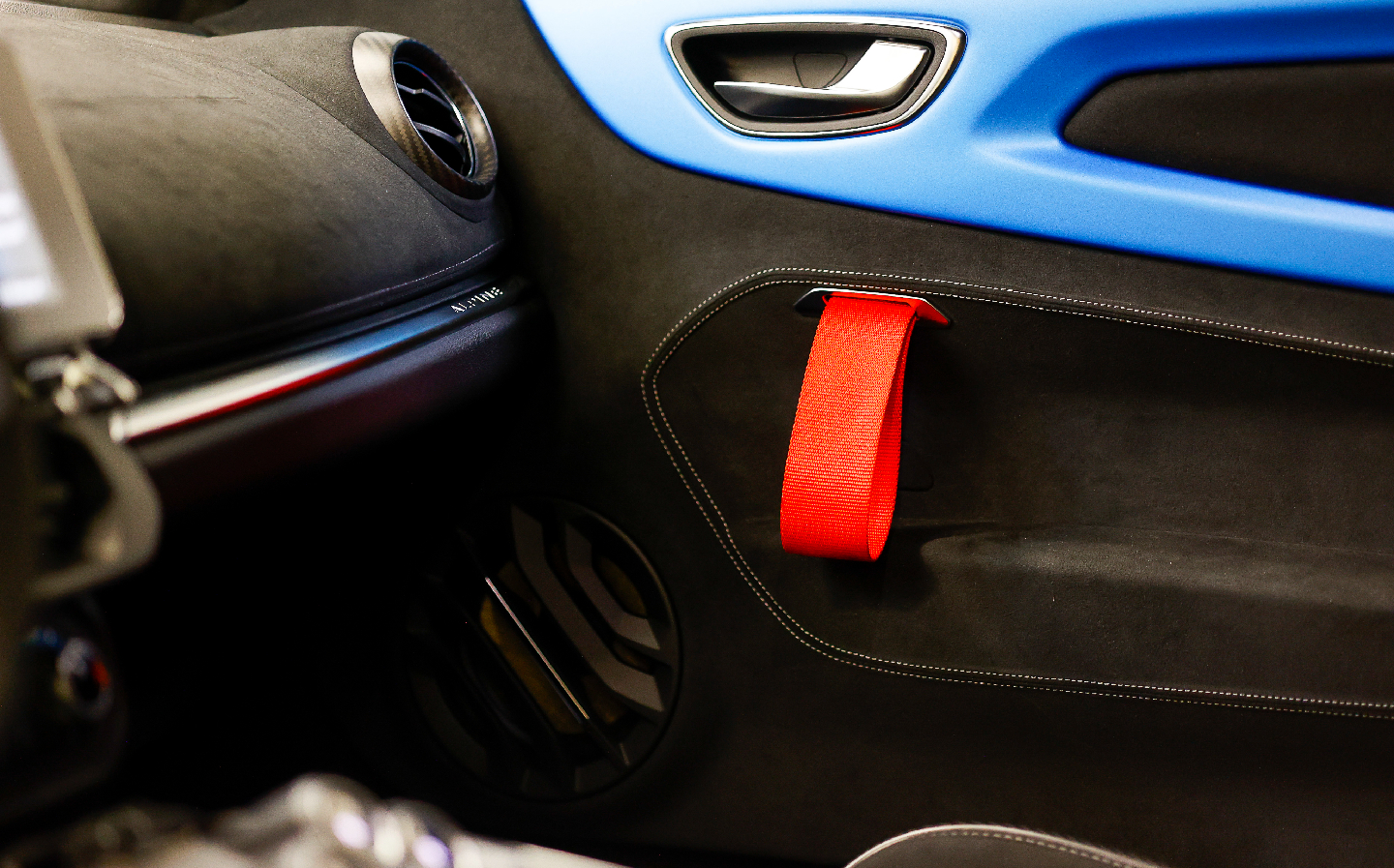
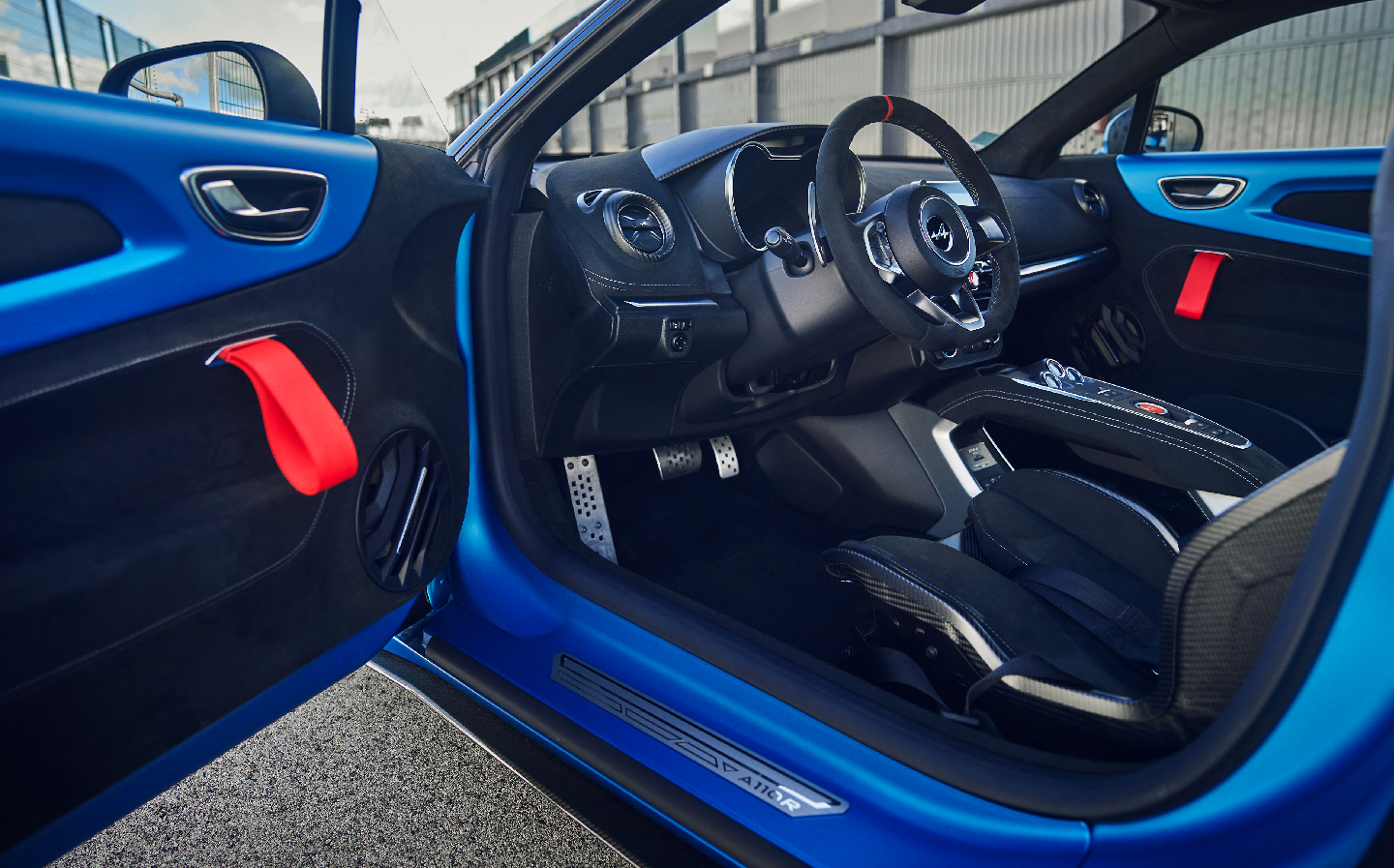
While designed to hold you in place round a racetrack — a job they fulfil splendidly — the seats are also fully homologated for road use and the car is able to remind you to buckle up if you haven’t before you set off.
A racing vibe has been created not just via the seats but also the red pull straps, which are very useful when strapped in having forgot to close the door. Microfibre fabric adorns the dashboard and doors, with Alcantara covering the steering wheel.
In terms of layout it’s the same as the other Alpine A110s, including the irritating Renault infotainment controls on a separate stalk behind the steering wheel. And the touchscreen isn’t the slickest, most modern option out there, though generally it’s a nicely laid-out cabin that cocoons you and makes you feel at one with the car while pressing on with gusto, either on track or road.
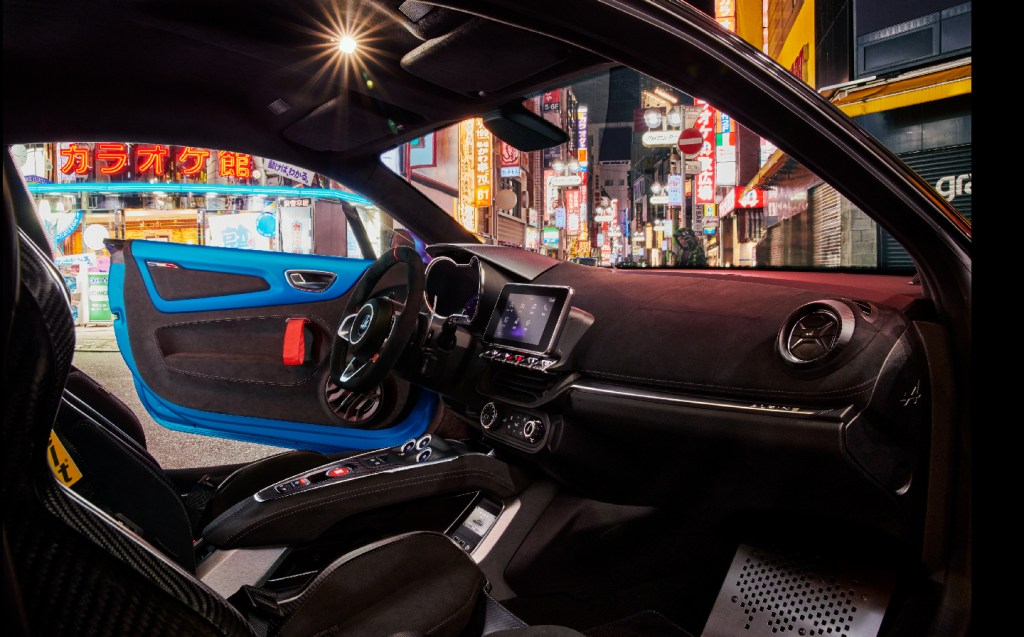
On the practicality side, this is a two-seat sports car so luggage space is not its thing, but having said that we managed to pack two mediums sized soft bags plus a couple of coats in the boot, leaving the compartment under the bonnet completely empty.
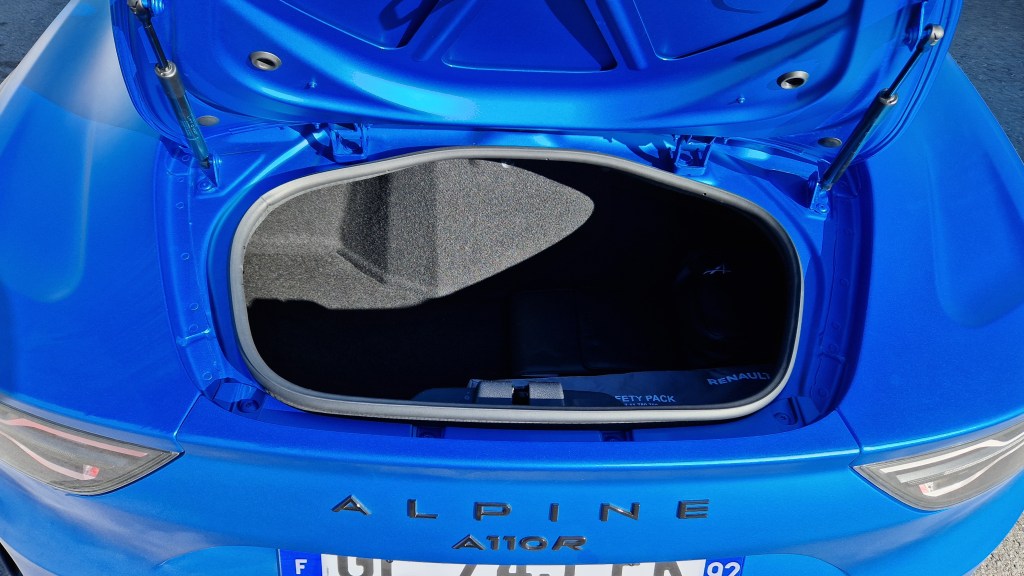
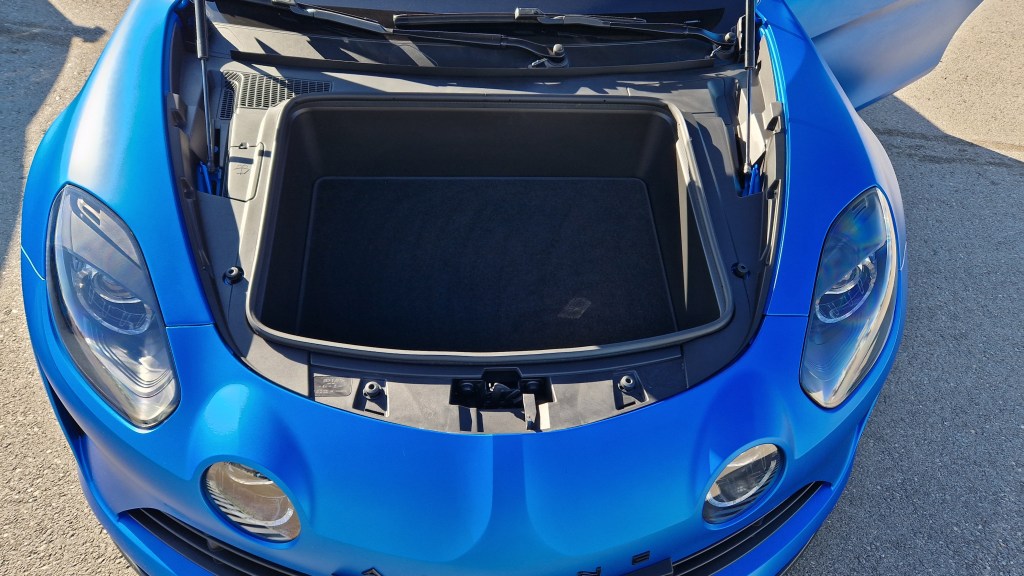
One thing to mention about the technology: Alpine has made an effort to satisfy track day drivers by integrated into the touchscreen an on-board telemetry system. It shows such things as G-force, revs, torque curve, turbo pressure, throttle inputs, steering wheel angle and horsepower reserve. The system can record your data for lap comparisons during track sessions.
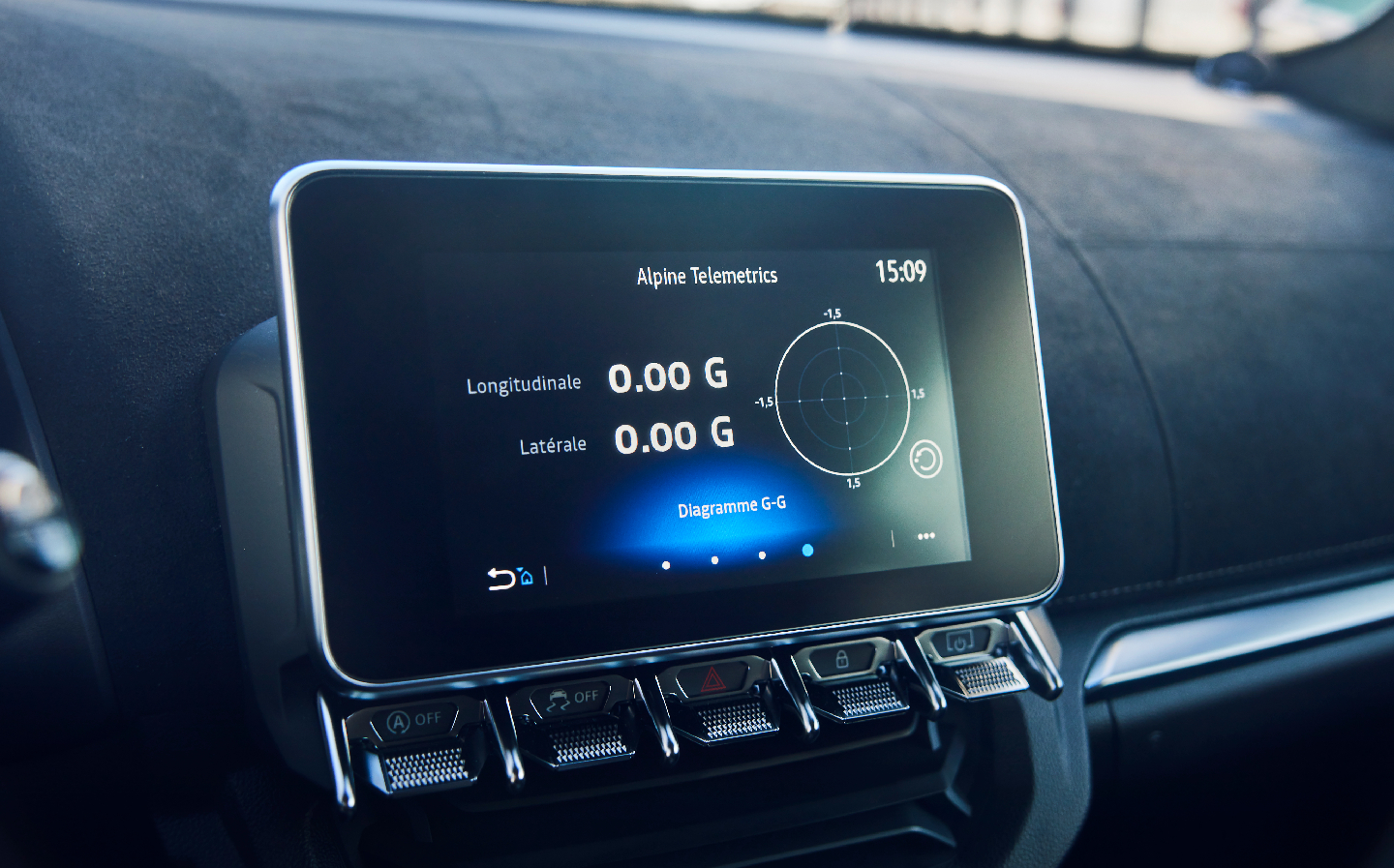
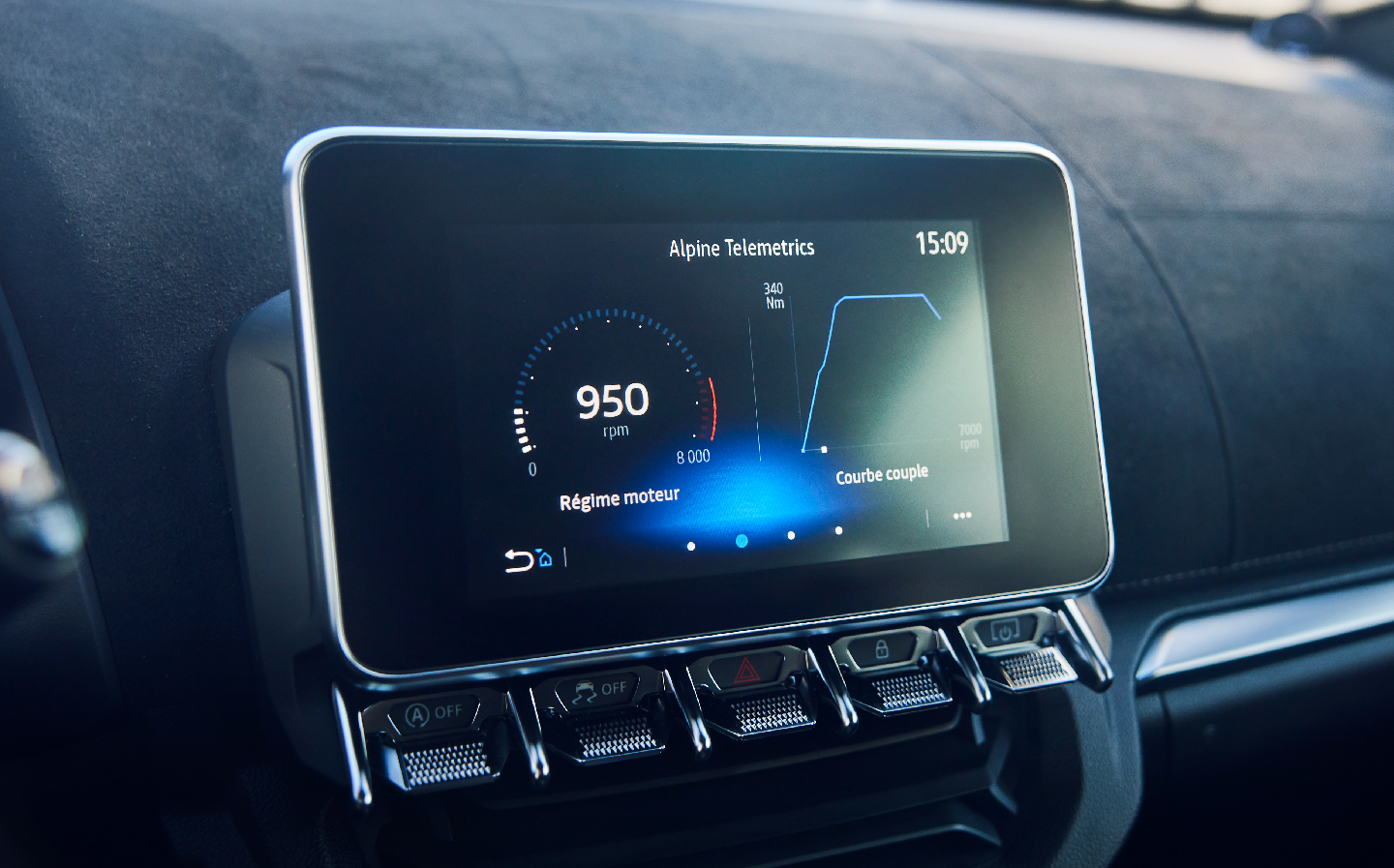
Engine, performance, acceleration times
Alpine chose not to beef up the 1.8-litre turbocharged engine for the A110 R, telling us on the launch that the aim was for performance improvements without increasing CO2. “Let us know if you think more power is necessary,” was the challenge from the project leader.
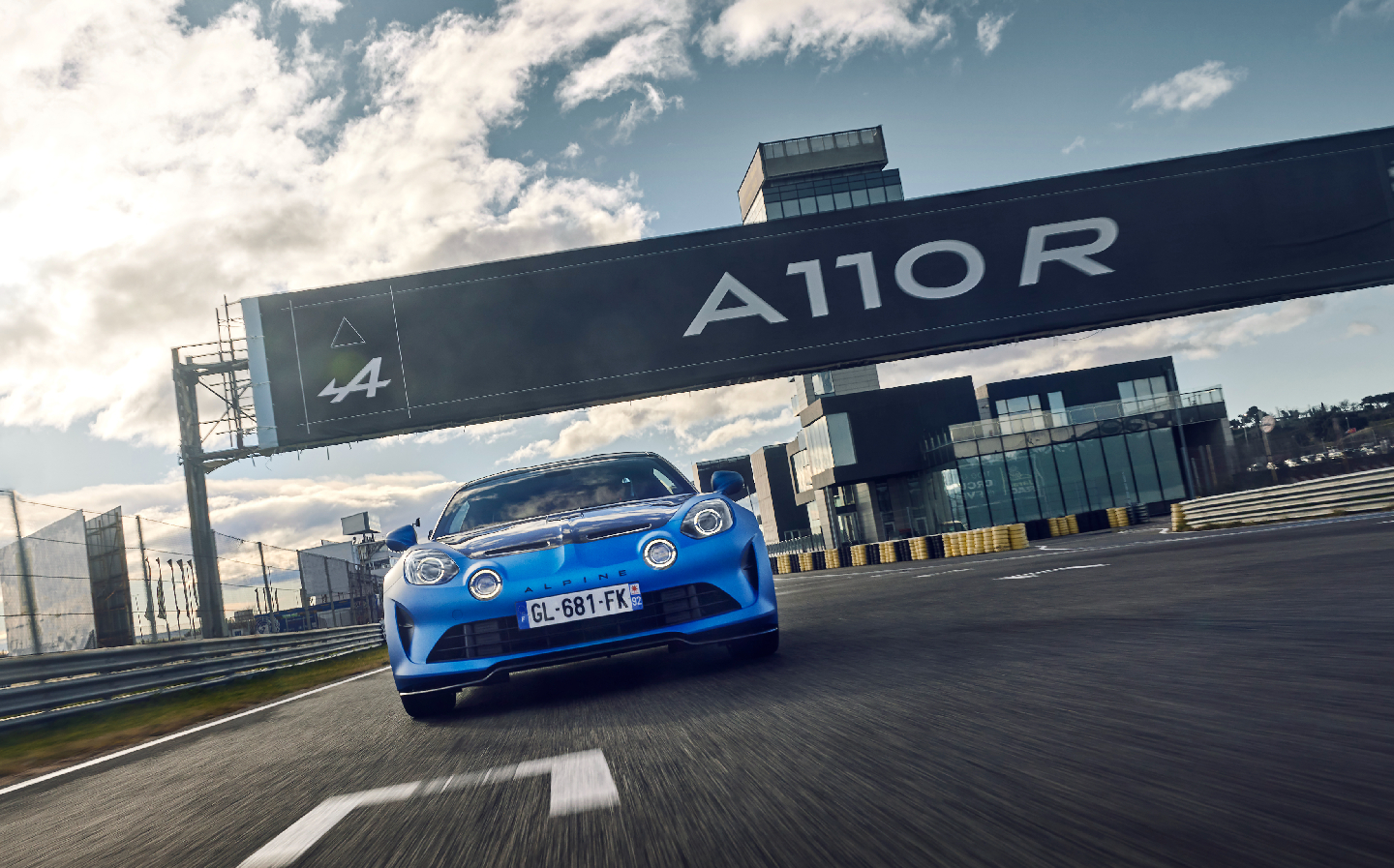
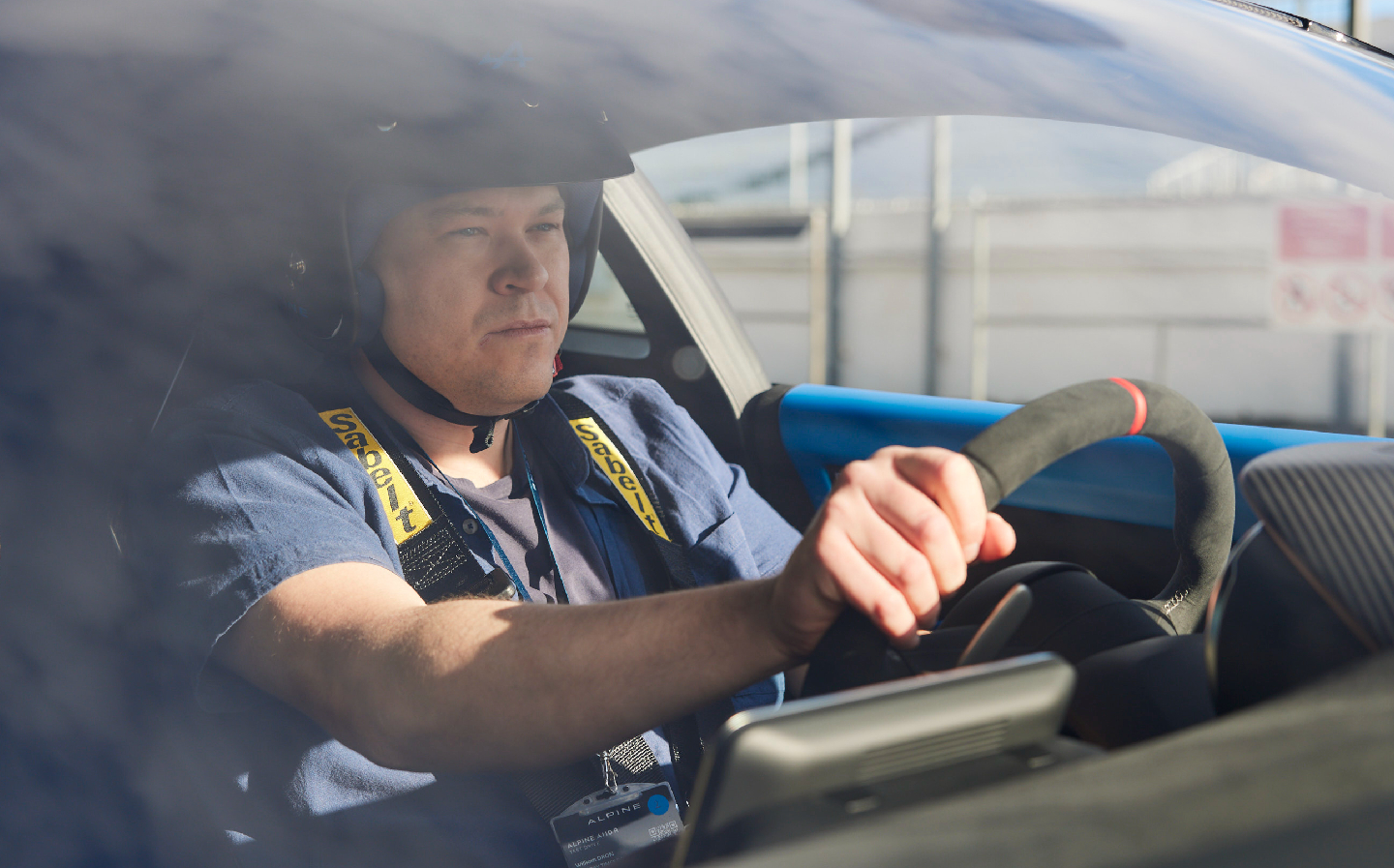
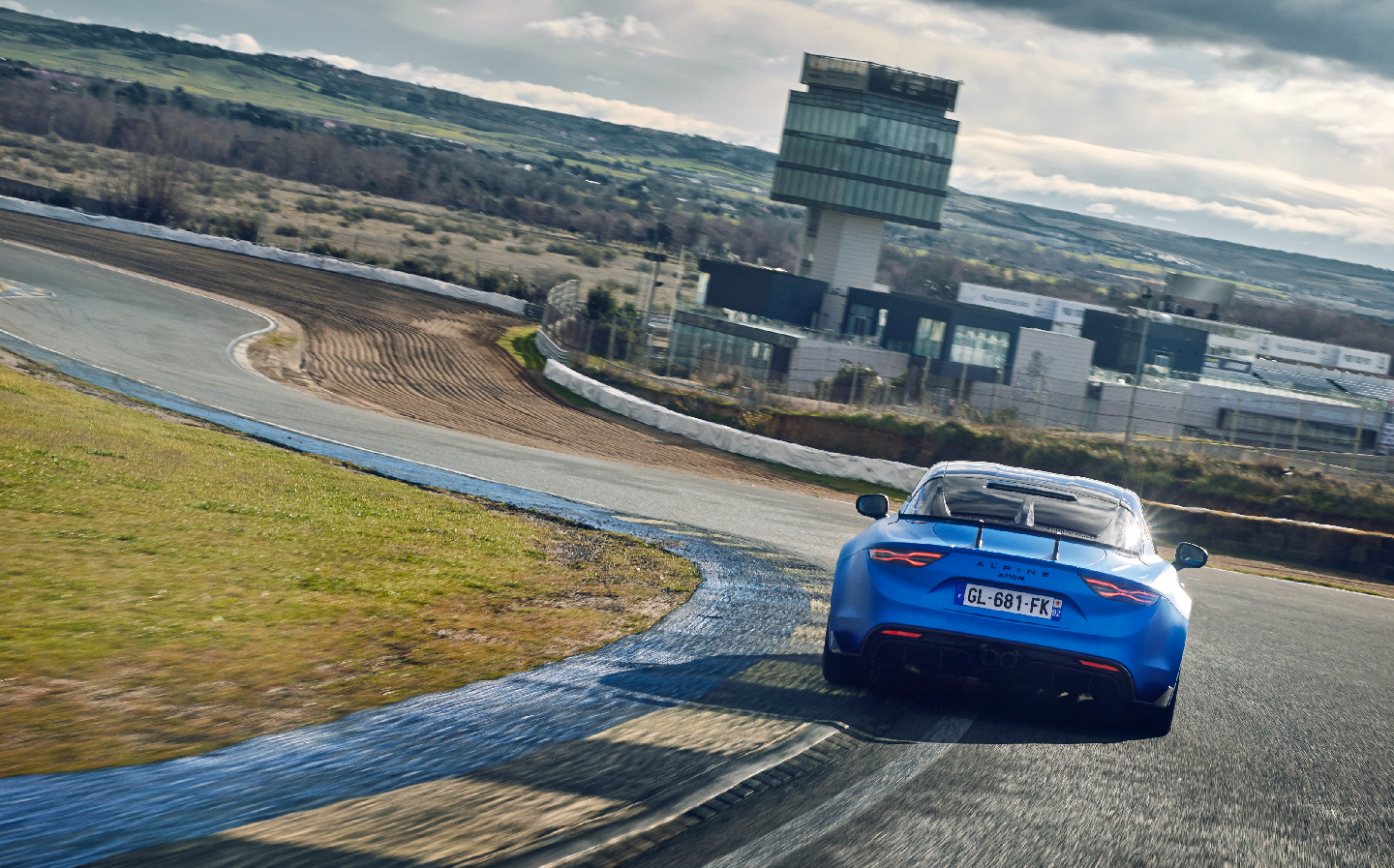
I can tell you that 296bhp is quite enough to have fun in a car that weighs 1,082kg, certainly on the road and around the twisty, undulating Jarama circuit in Spain. Even on the pit straight I wasn’t longing for extra performance, as the beauty of the A110 R is felt through the turns (more below). It’s true that even in track mode you have to try quite hard to get the back end to step out, but fast lap times a drift does not make.
This is a more serious machine than that, and it provides plenty of thrills. I certainly had a smile on my face every time I got out of the car, and that surely should be the true test of a decent sports car.
For the record, 0-62mph is despatched in 3.9sec – three tenths quicker than the A110 S, and pretty swift by any standards, thanks to a power-to-weight ratio of 3.6kg per horsepower. The top speed of the A110 R, as mentioned earlier, is up to 177mph.
Ride, handling and refinement
No prizes for guessing my verdict on the handling: it is sensational. While the front end is lithe and darty around a circuit, on the road the front wheels like to return to dead straight meaning keeping the car from wandering during motorway stints isn’t a chore.
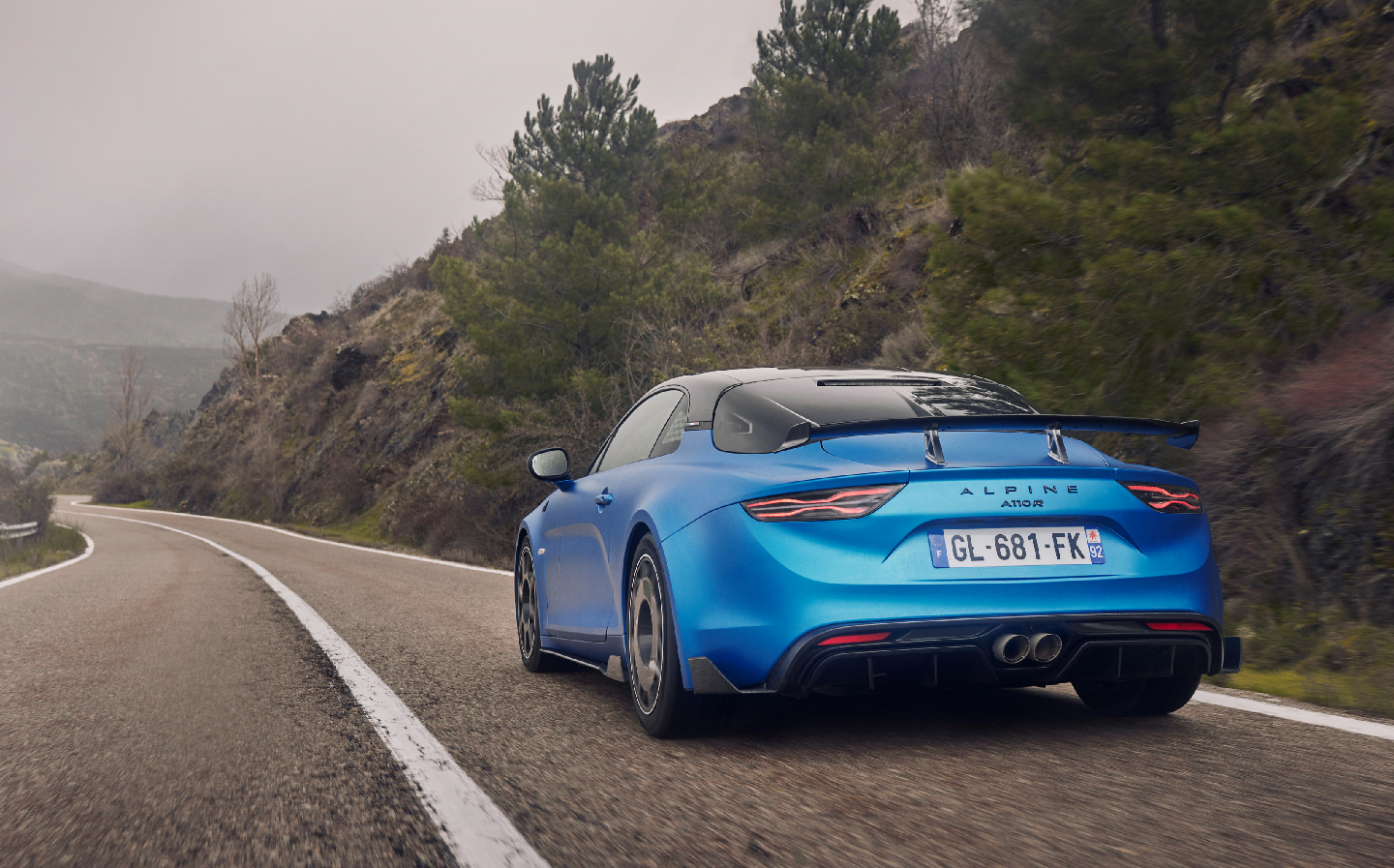
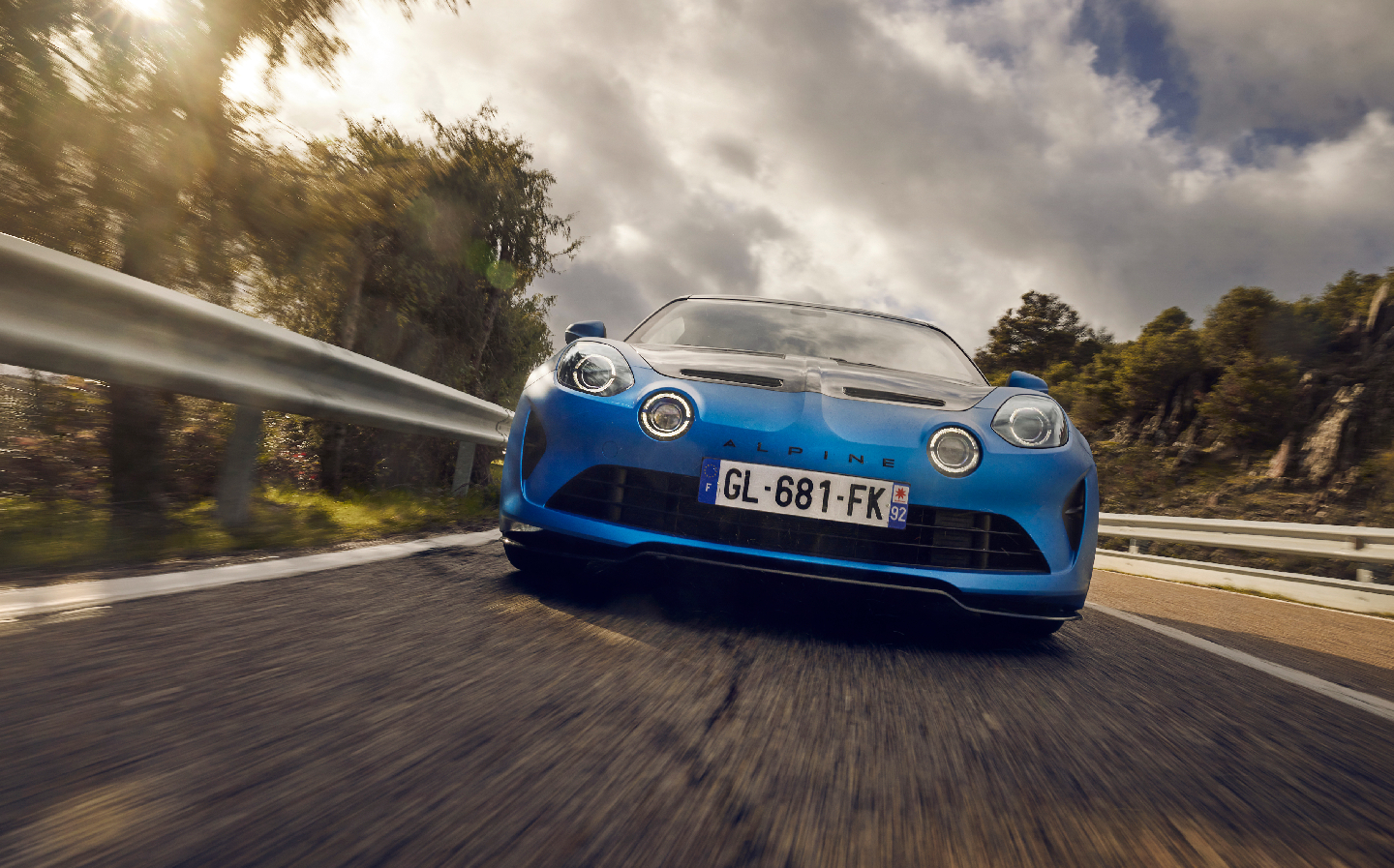
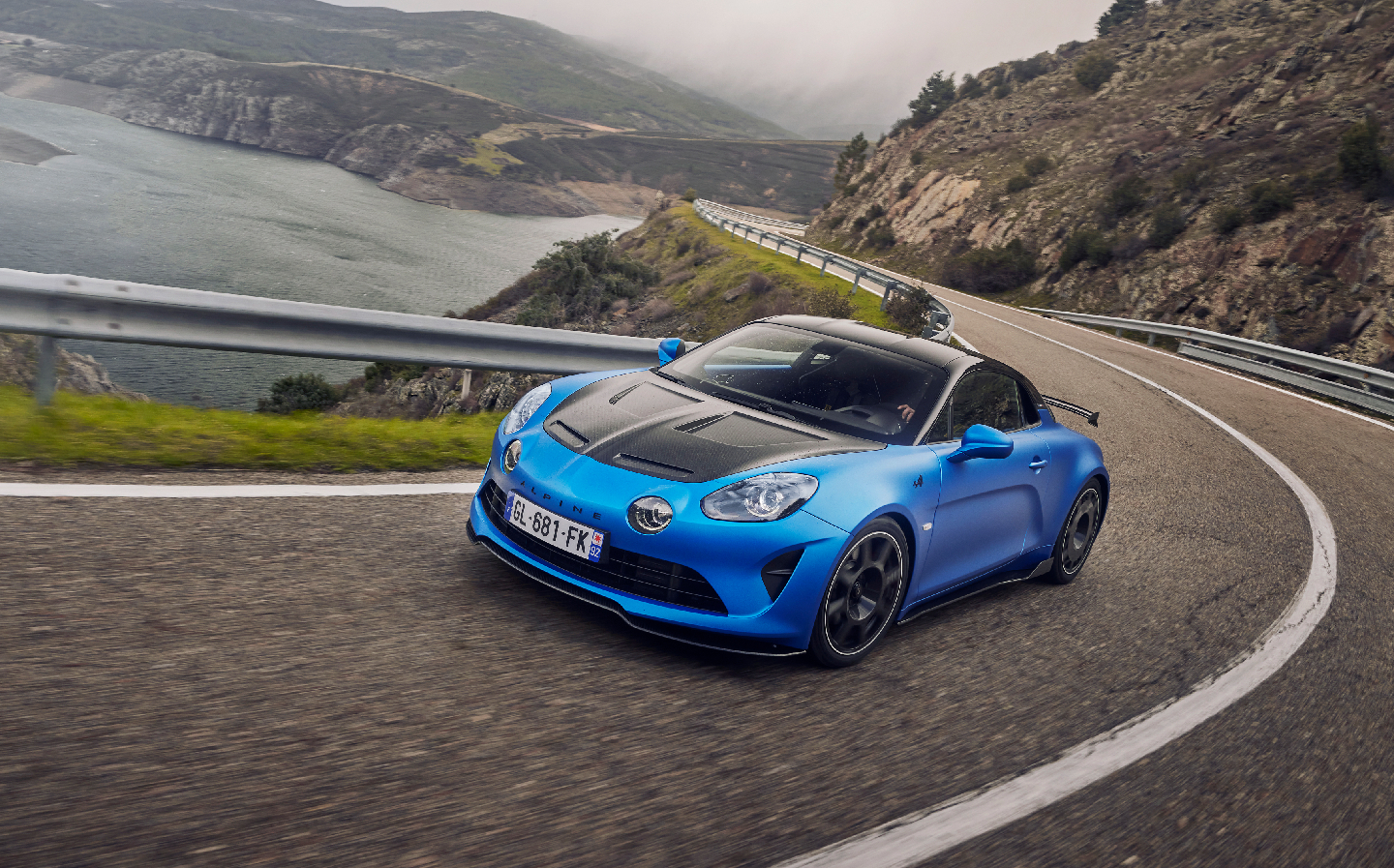
The engine note isn’t the most pleasant, despite removing the exhaust valve, having a sound pipe running from the engine to the bulkhead panel and swapping out the exhaust tips for a bespoke 3D-printed steel job, but it’s not an extreme noise in the cabin so you can stay on that motorway for a good distance without feeling exhausted or going deaf, as might be the case in a Porsche 718 GT4 RS.
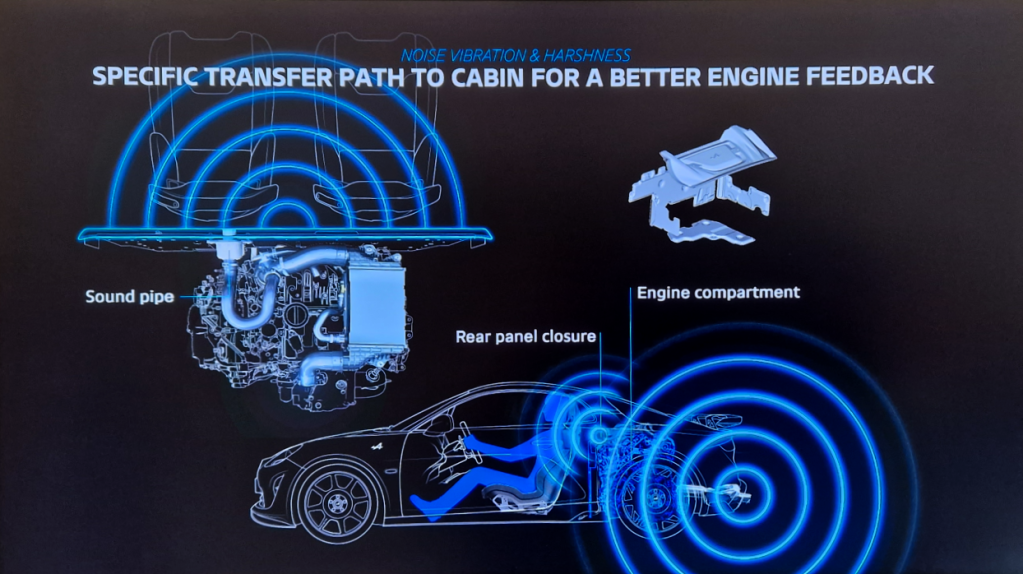
Cornering is this car’s trump card, though. New anti-roll bars make the A110 R 10% stiffer than the A110 S at the front and 25% stiffer at the rear, while the springs are 10% firmer in each corner. That means roll is 15% down overall when compared with the S.
The R also sits 10mm lower in standard mode but can be dropped a further 10mm for use on the track – a simple but manual procedure (adding electronically-controlled ride height adjustment would have added unwanted kilos). You can also adjust the damper rates by hand, with a simple twist of a 20-click dial at the top of the struts.
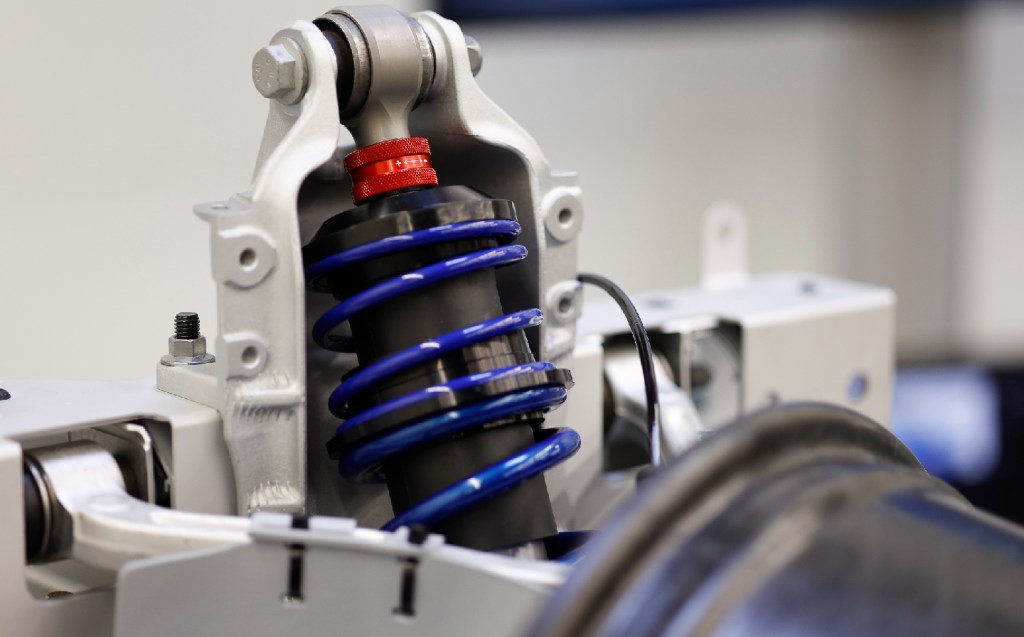
The cars we drove on track had been lowered, and the dampers set up for us by pro track drivers, and I definitely had no complaints.
Standing on the brakes for a hairpin and putting every pound of pressure through the 320mm metal discs (front and rear) isn’t like dropping an anchor but stopping power is still prodigious, and as the Michelin Pilot Sport Cup 2 semi-slick tyres (developed with Alpine for the A110 in 2019) squirm around the car feels exactly like the best sports cars ever made – an extension of yourself. You can dance the car into a corner and abuse it in a way that you couldn’t with heavier, more powerful machines, which might punish you for doing so.
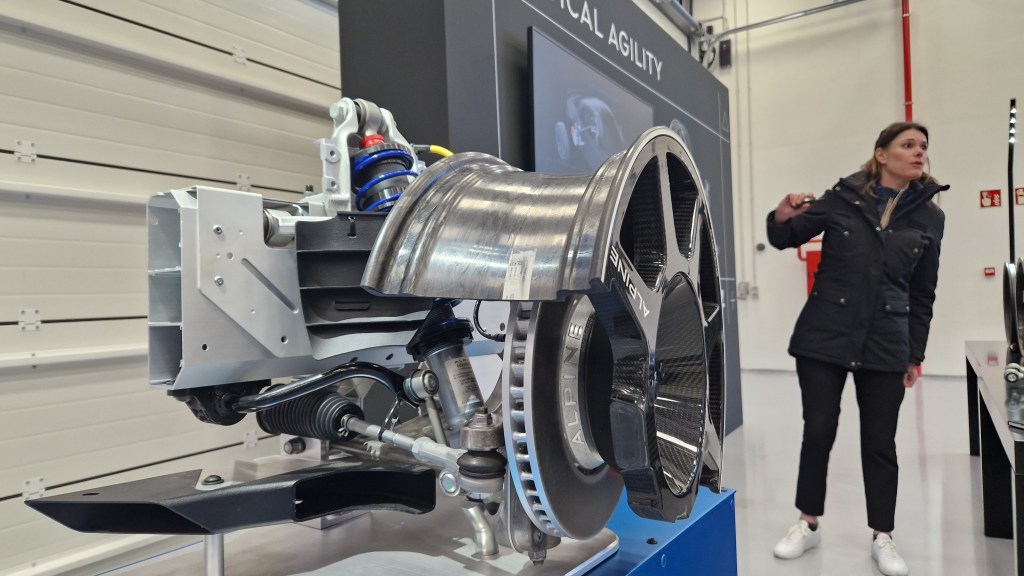
Some will tell you that the lack of a clever differential at the back (it’s an open diff still) is an issue, and there were a couple of moments on the road when the car didn’t rotate on its centre axis quite as willingly as a Porsche Cayman, for example, but the front end grip and sharpness of the turn-in compensates for that most of the time. At least in the dry; with those semi-slick Cup 2 tyres, things could get quite a bit more interesting in the wet.
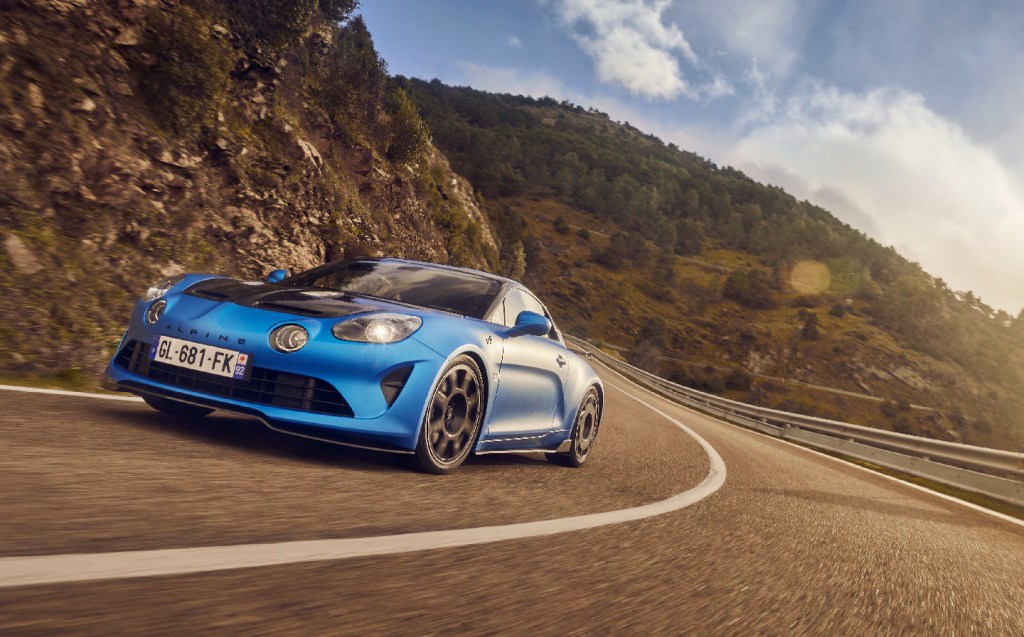
The most amazing thing about the A110 R, though, is that despite its motorsport-derived suspension the ride quality on bumpy roads is not at all jarring – it’s really surprisingly pliant, with bumps and dips in the road brushed off without bottoming out or rattling teeth. It’s a car you could drive to a circuit without feeling like you’d had enough of it by the time you got there, and be keen to get back into for the drive home.
Price, on-sale date and rivals
Given the extensive sporting upgrades it should come as no surprise that the range-topping Alpine A110 R has the biggest price tag. It costs from £89,990, which is a significant jump from the £61,990 A110 S.
However, given all 32 cars allocated to the UK this year are sold out one could easily argue it’s not overpriced, and the carbon fibre wheels alone, it was suggested to me, might cost £10,000.
But for nearly 90 grand there are obviously a lot of options for the keen sportscar buyer.
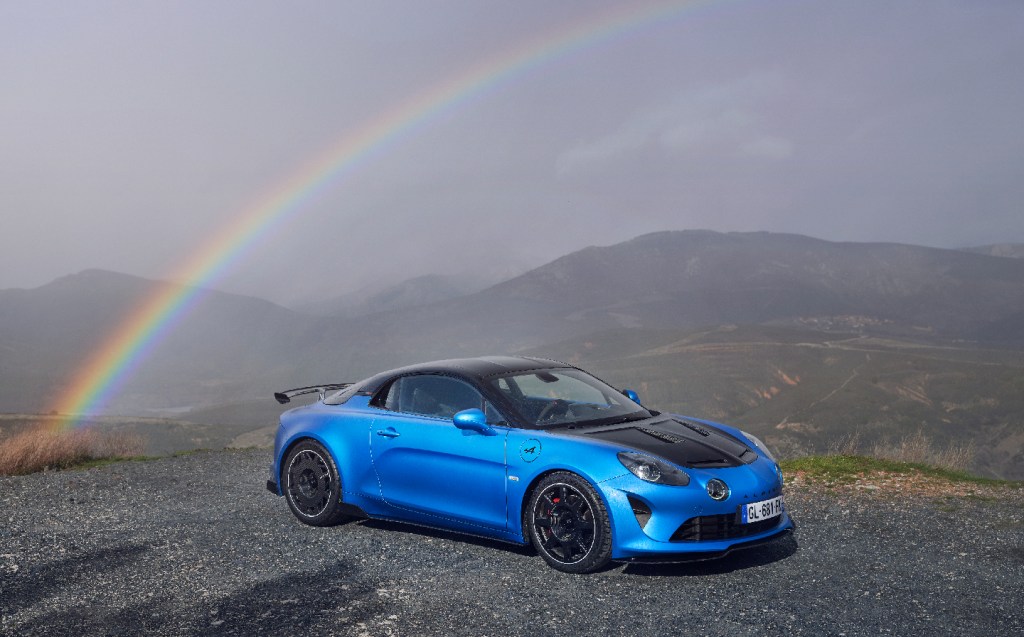
The Porsche 718 Cayman GT4 is the most obvious choice — starting at £81,700 and with an extra 118bhp on tap, the Porsche seems like a no-brainer. But don’t forget the A110 R is a more exclusive machine, adding desirability, and weighs 332kg less. That extra lightness is reflected in the 0-62mph time (the 718 GT4 manages it in 4.4sec vs the Alpine’s 3.9sec), and the 718 GT4 is most definitely not a heavy lump.
You could also look at the 335bhp 3-litre Toyota GR Supra (£54,485) or 444bhp Jaguar F-type 75 (£78,330). Though again, more weight.
Verdict: Alpine A110 R review
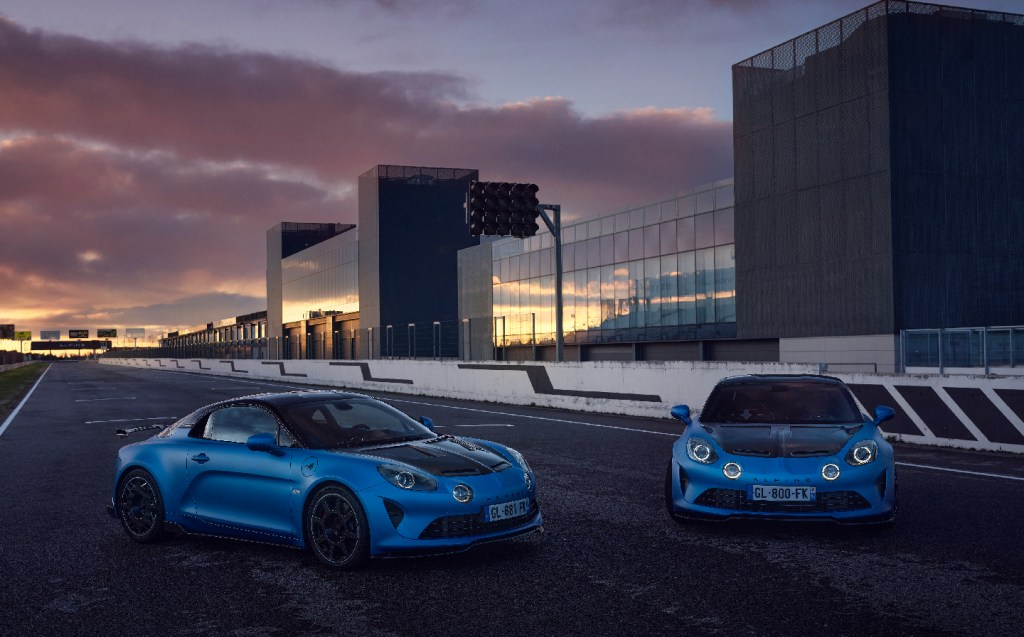
Alpine calls the A110 R the most radical version of its lightweight sportscar yet, and that is true in terms of its shedding of weight and use of high tech motorsport-derived components. Some might have expected the 1.8-litre turbocharged engine to have been replaced by something a bit more potent, or at least for the power to have been turned up a few notches – certainly you can get more bhp for the money elsewhere.
But this is an extreme lightweight machine compared with even something like a Porsche Cayman GT4, and that’s reflected in the 0-62mph time and handling feel. Despite a lack of a sophisticated diff, the A110 R is a really terrific thing to hustle round a track or twisty mountain road, and it’s surprisingly refined on the road, too.
It’s also one of the last hurrahs for featherweight sports cars before everything goes electric, and represents Alpine’s final petrol car (the next model due is a hot version of the Renault 5 EV, and the E-ternité concept shows the way for an electric A110 replacement). As such the A110 R could easily be considered a highly collectable future classic. So despite not having a cap on production volumes, the biggest problem with the Alpine A110 R will be getting hold of one.
Tweet to @wdron Follow @wdronRelated articles
- After reading our Alpine A110 R review you might like to check out what we had to say about the Porsche 718 Cayman GT4 RS
- Or read about the engineer behind the legendary Metro 6R4’s new plan to launch an electric sports car with a ‘Frogeye’ Sprite bodyshell
- Alpine E-ternité concept previews future electric sports car
Latest articles
- Omoda 5 prototype review: Bargain family SUV is solid first effort for new Chinese brand
- Dacia Duster 2024 review: Rugged, affordable SUV modernised with electrification and quite the glow up
- Audi A3 Sportback 2024 review: Softly, softly, catchy premium hatchback buyer
- New electric-only Mini Aceman fills gap between Mini Cooper hatch and Countryman SUV
- Tesla driver arrested on homicide charges after killing motorcyclist while using Autopilot
- Porsche Macan 2024 review: Sporty compact SUV goes electric, but is it still the class leader for handling?
- F1 2024 calendar and race reports: What time the next grand prix starts and what happened in the previous rounds
- Aston Martin DBX SUV gets the interior — and touchscreen — it always deserved
- Nissan unveils bold look for updated Qashqai, still made in UK


